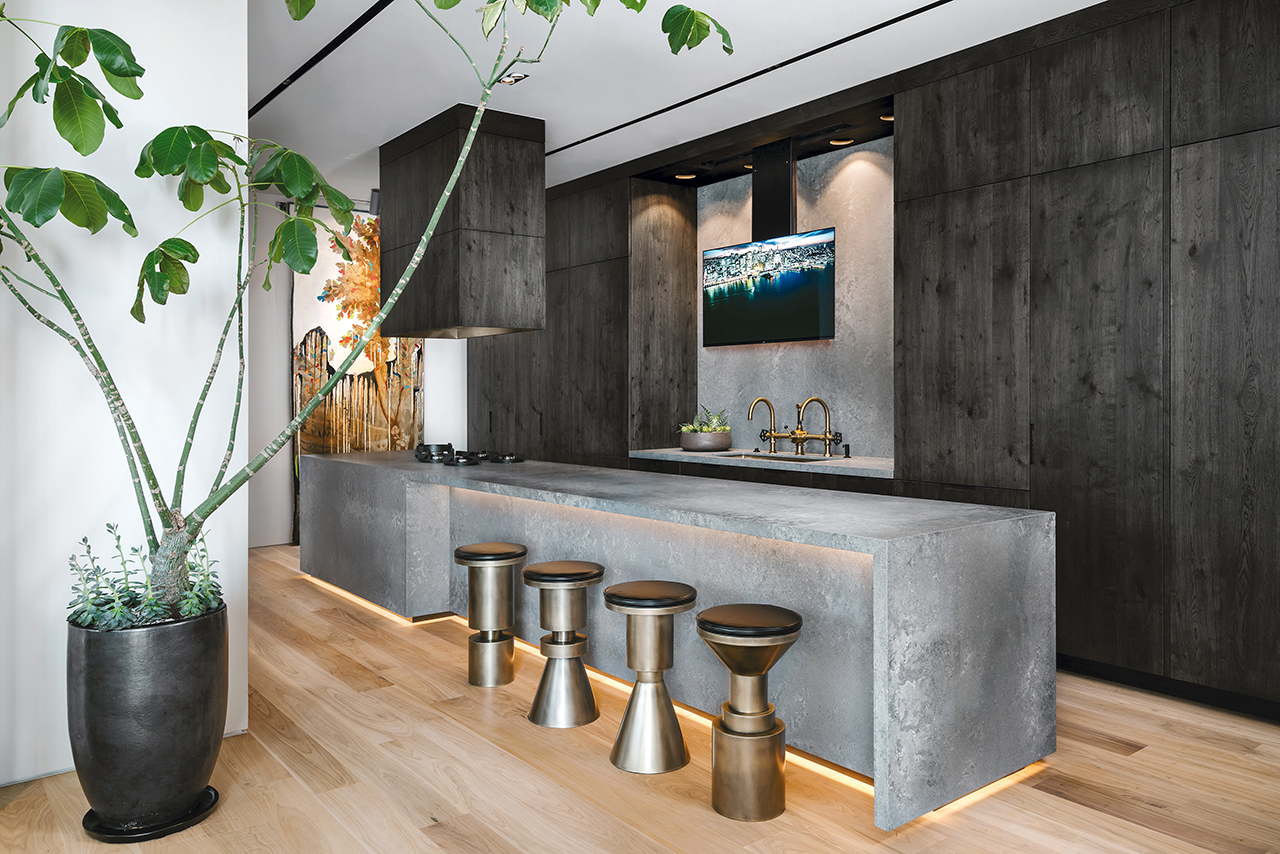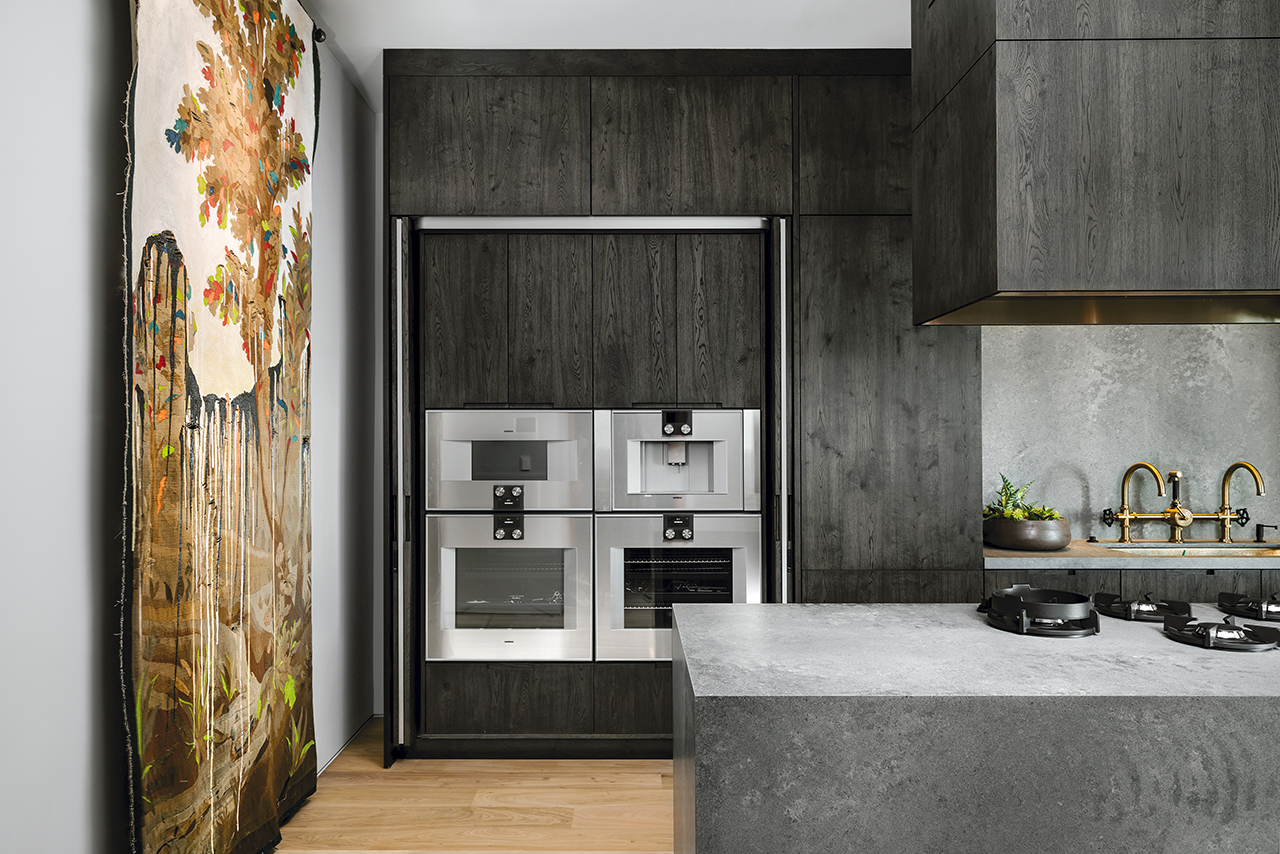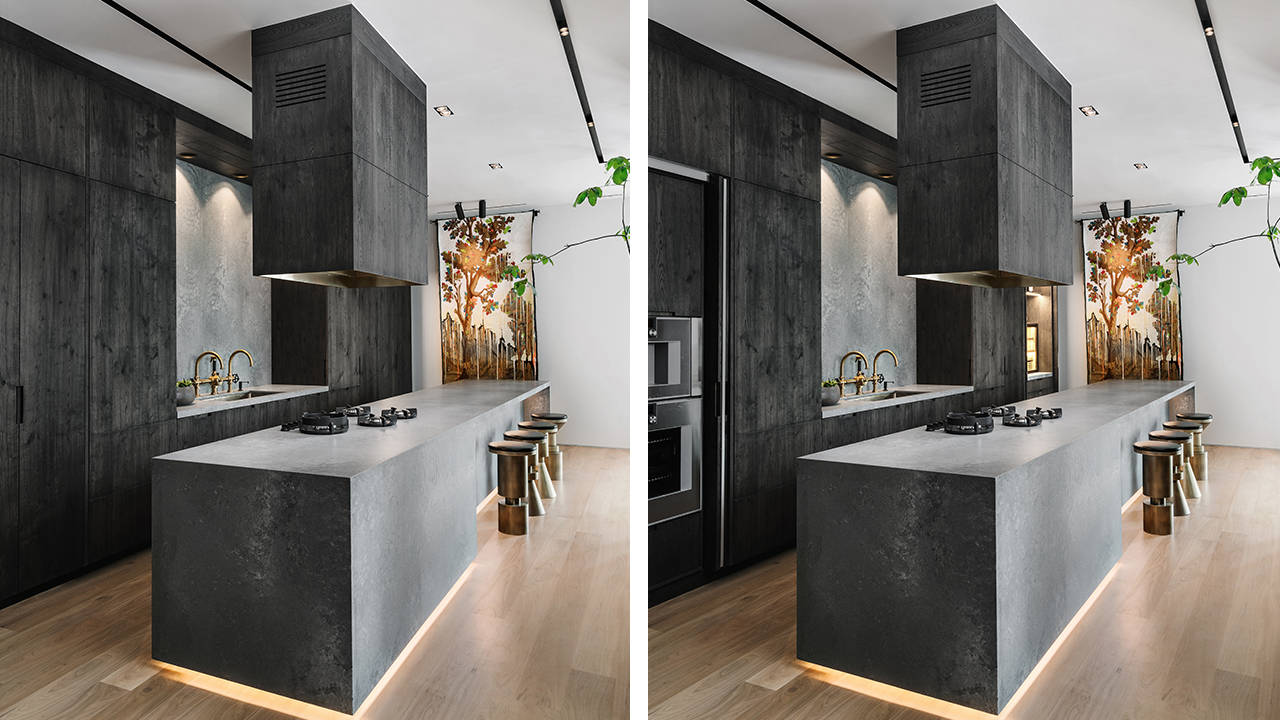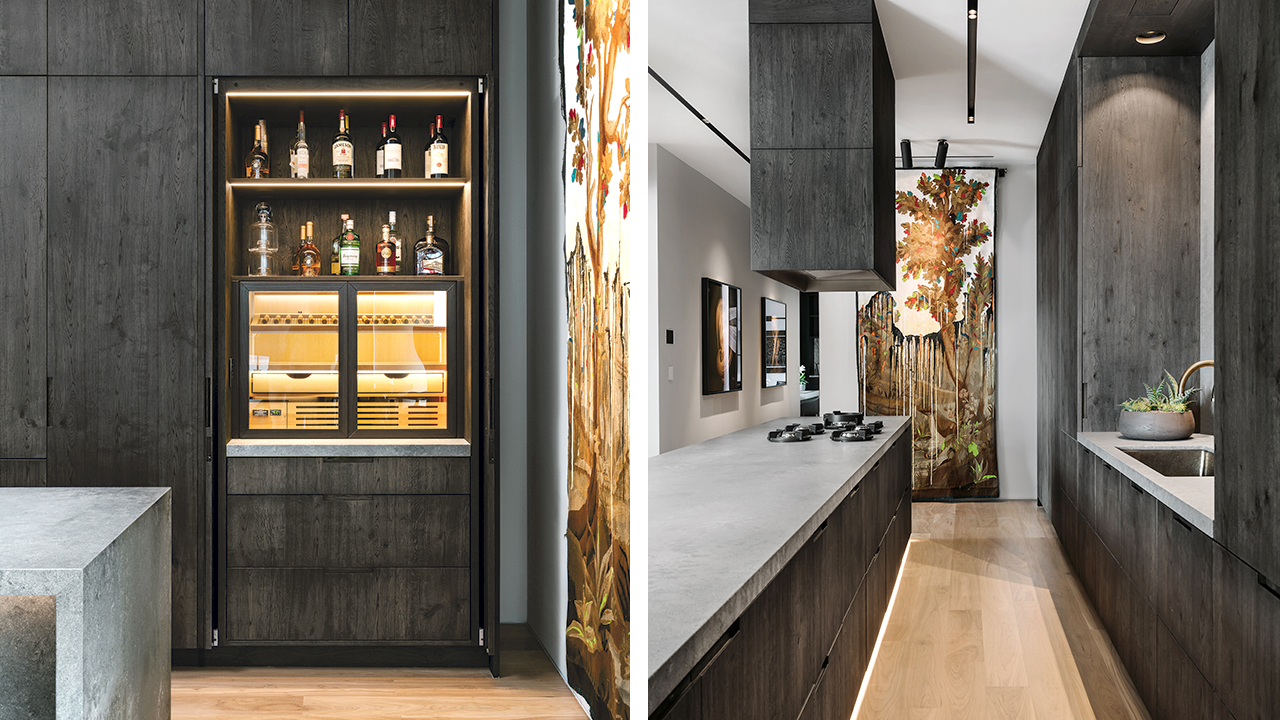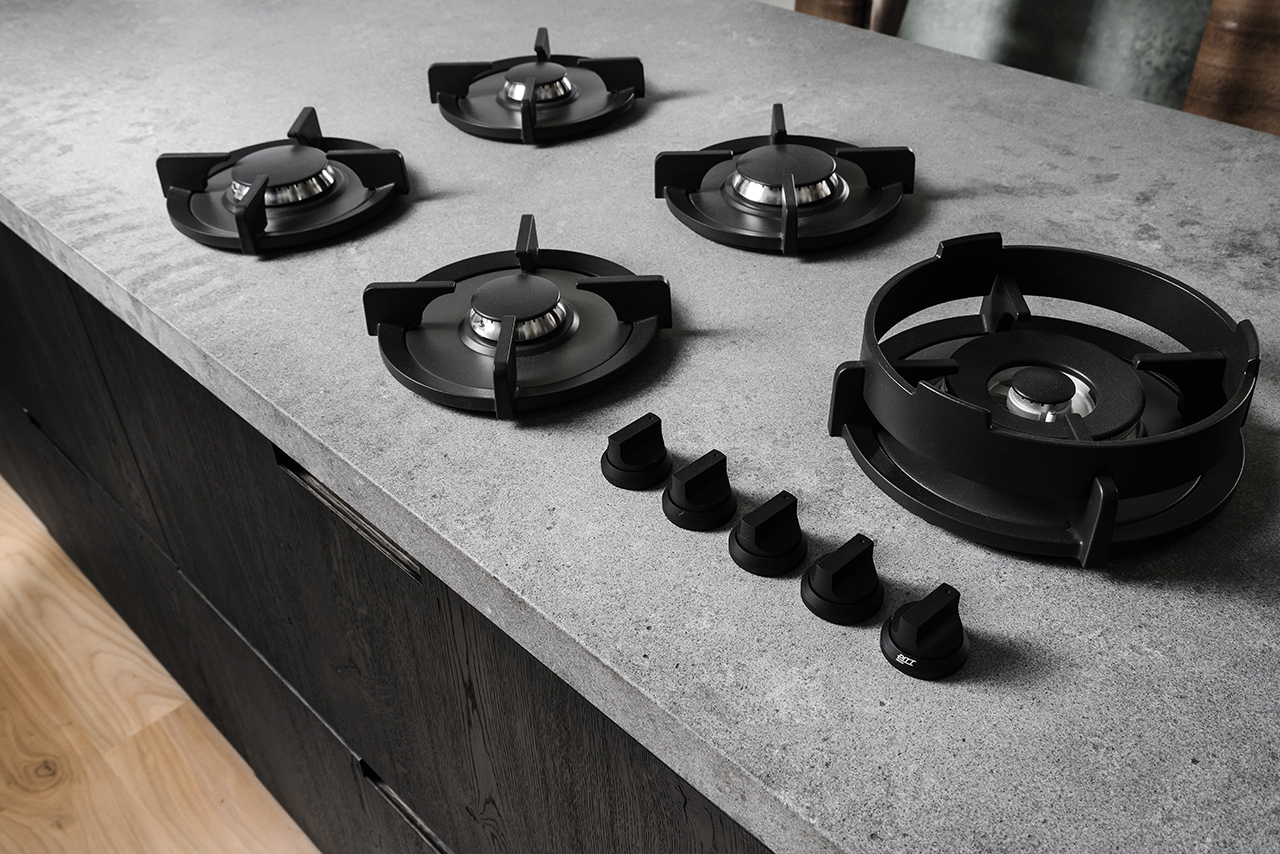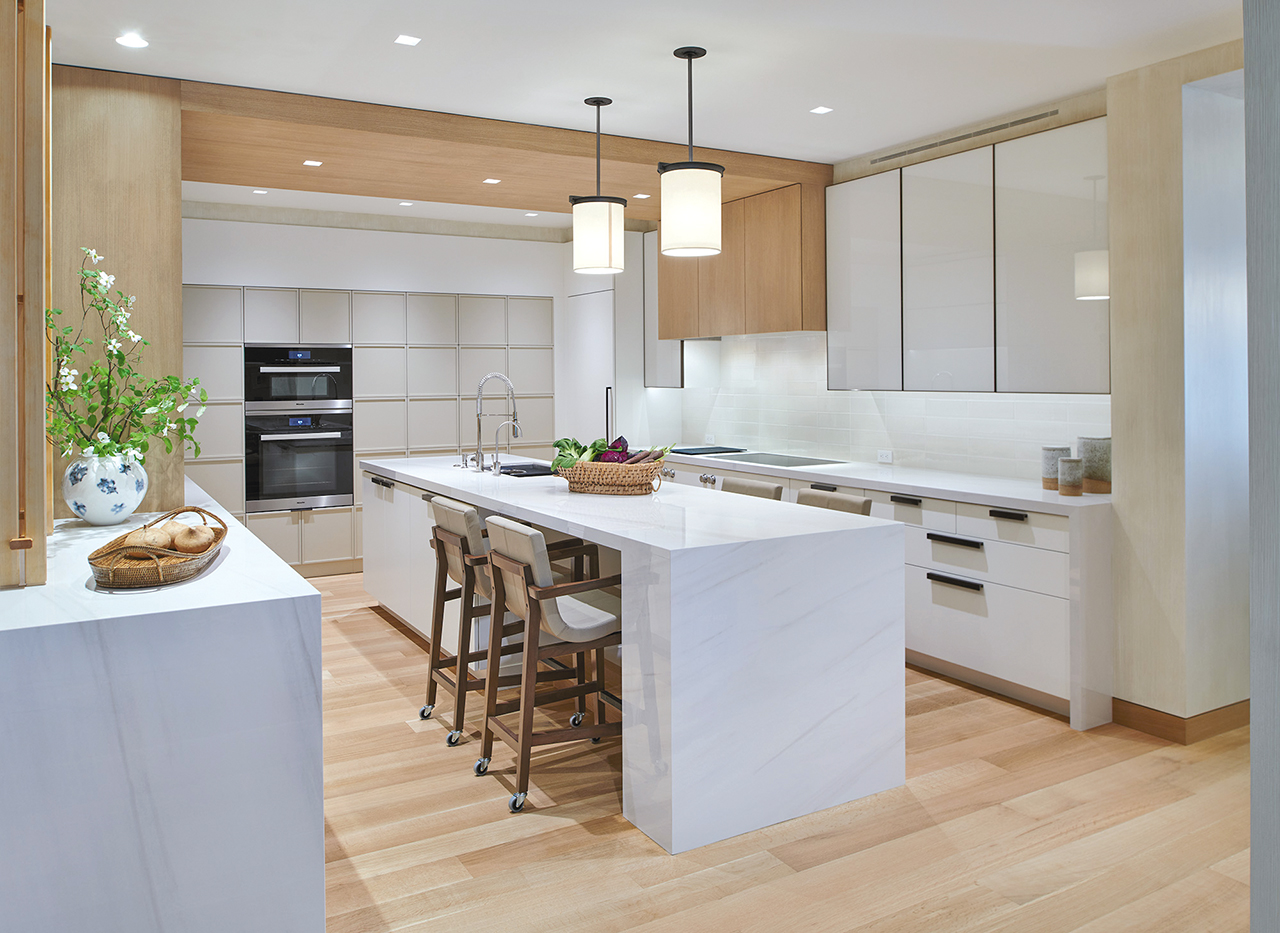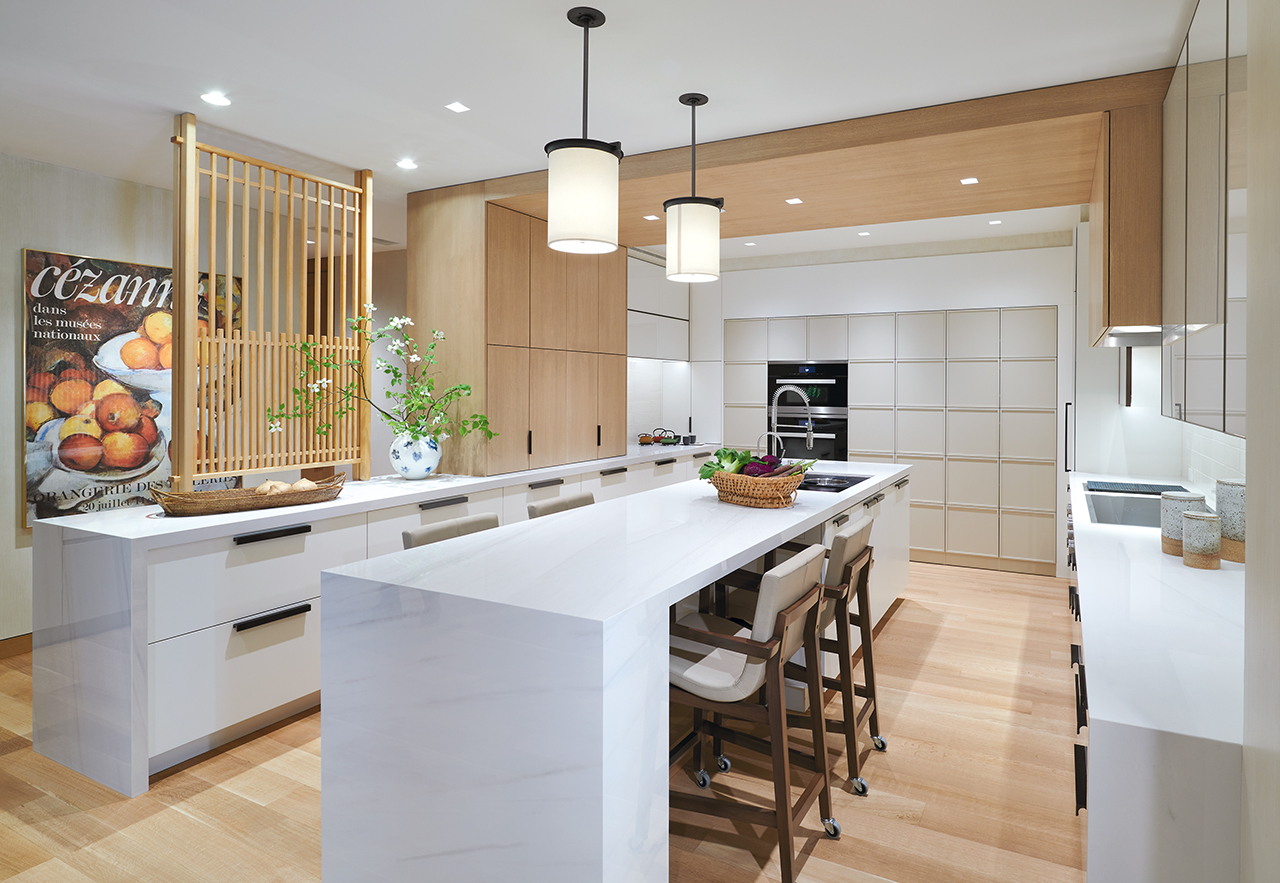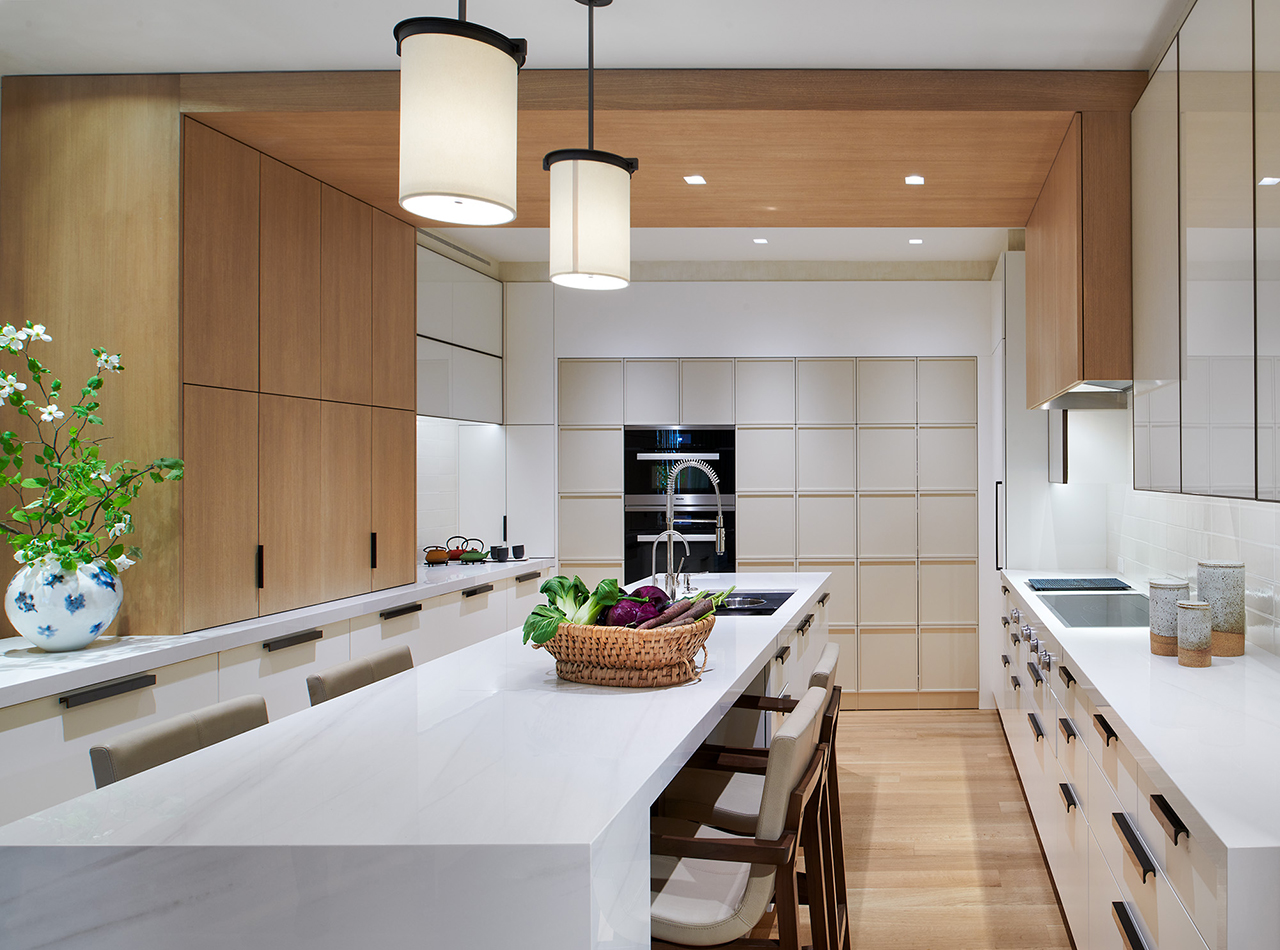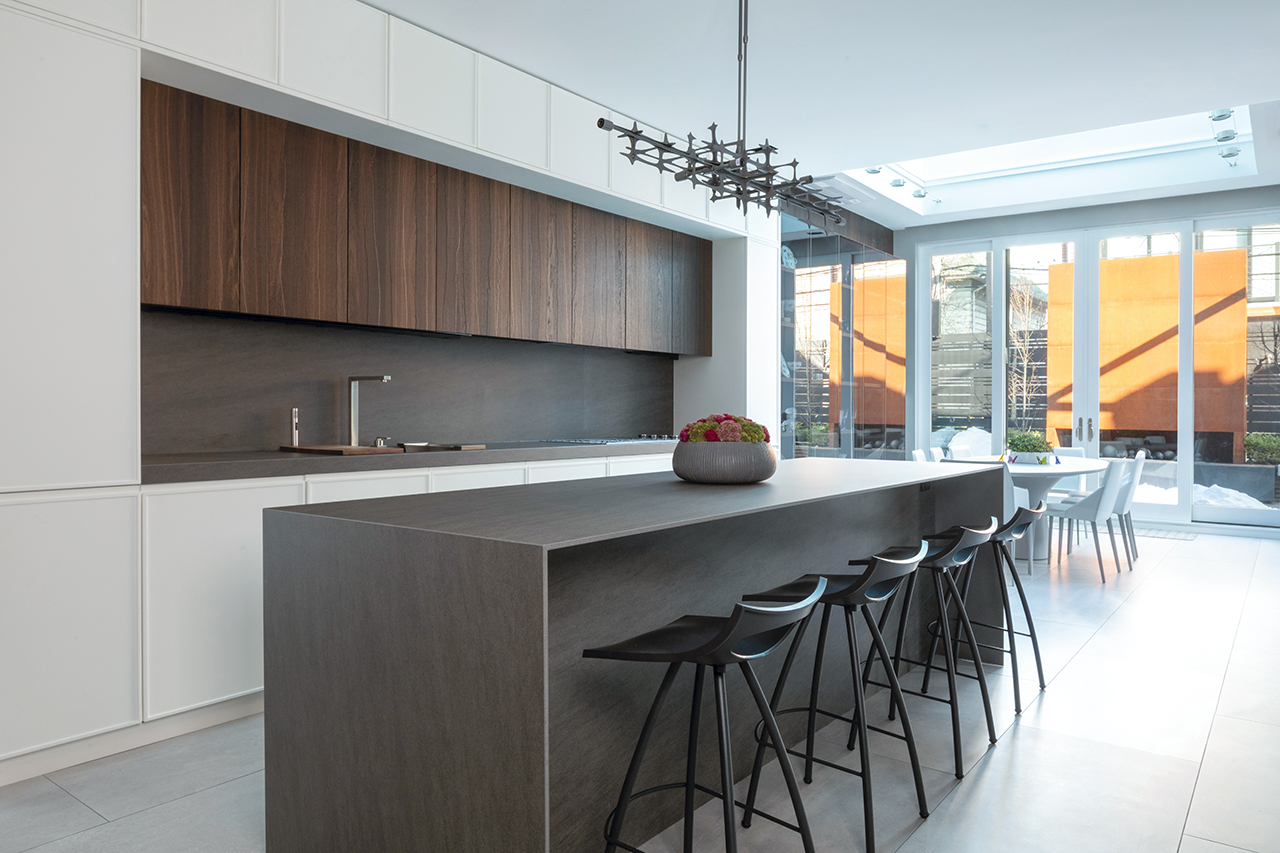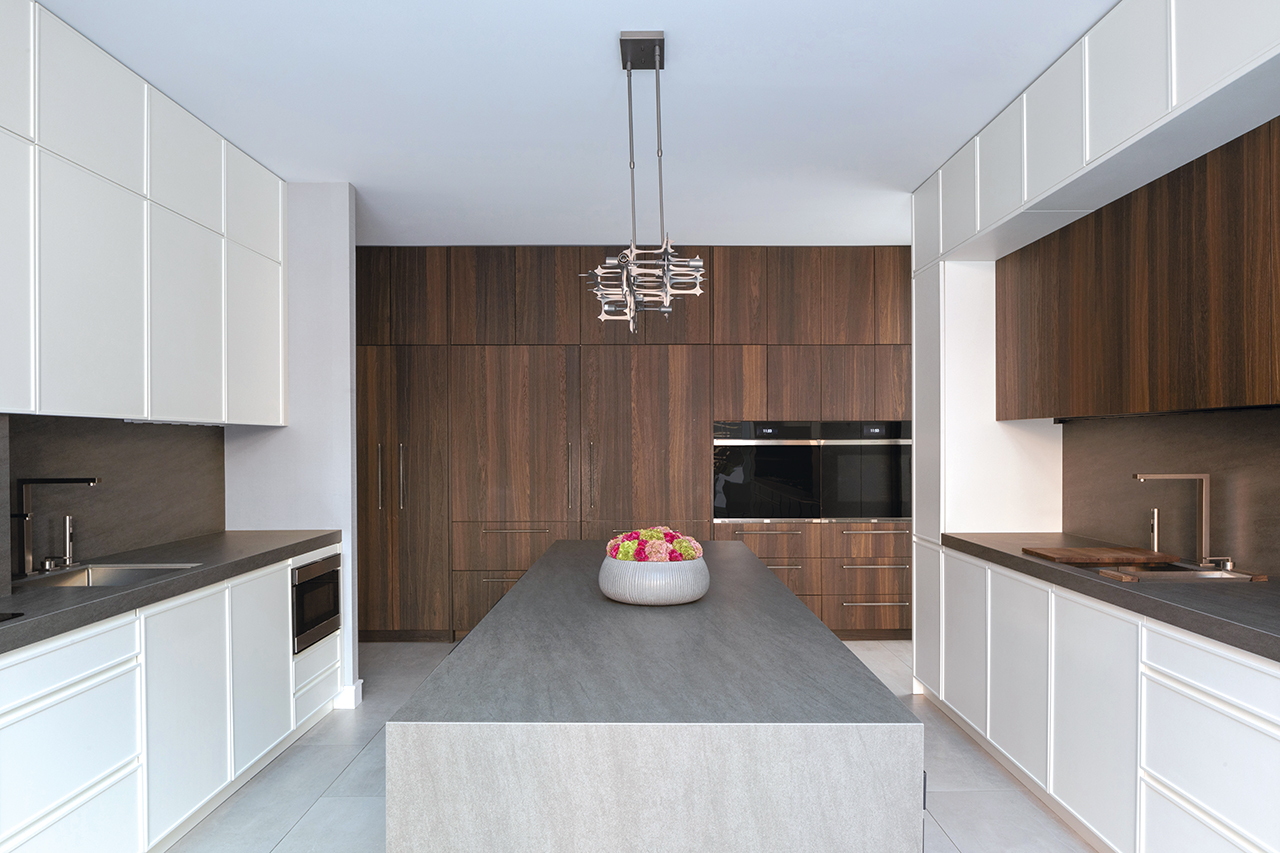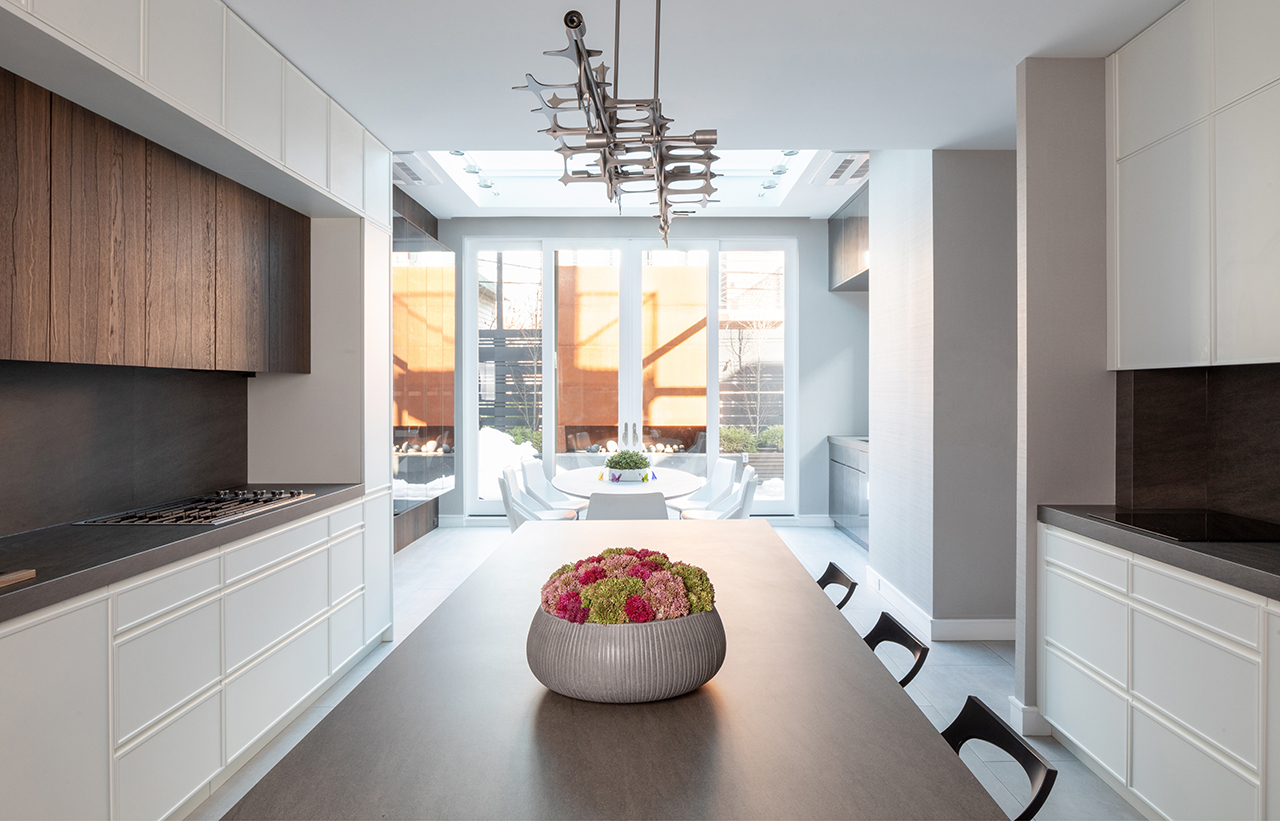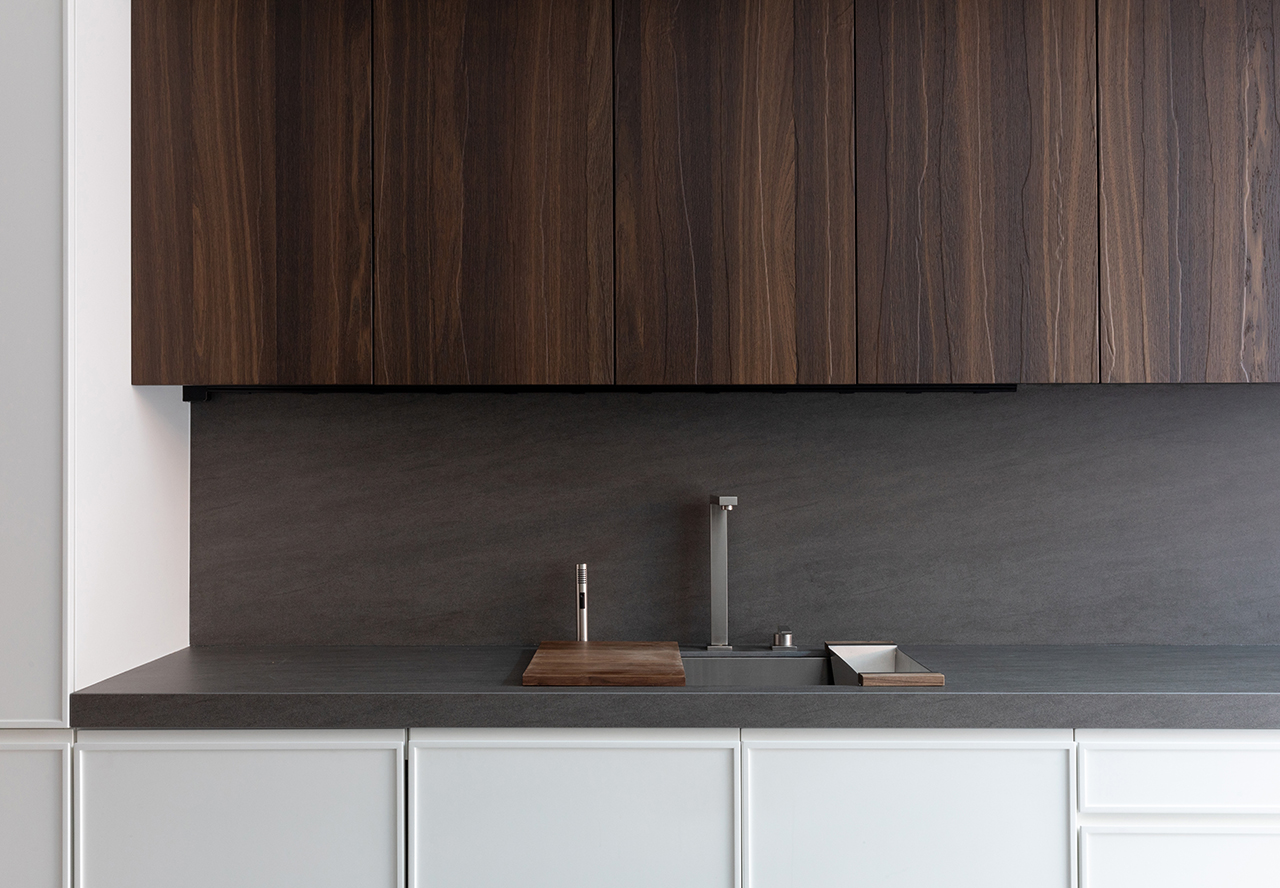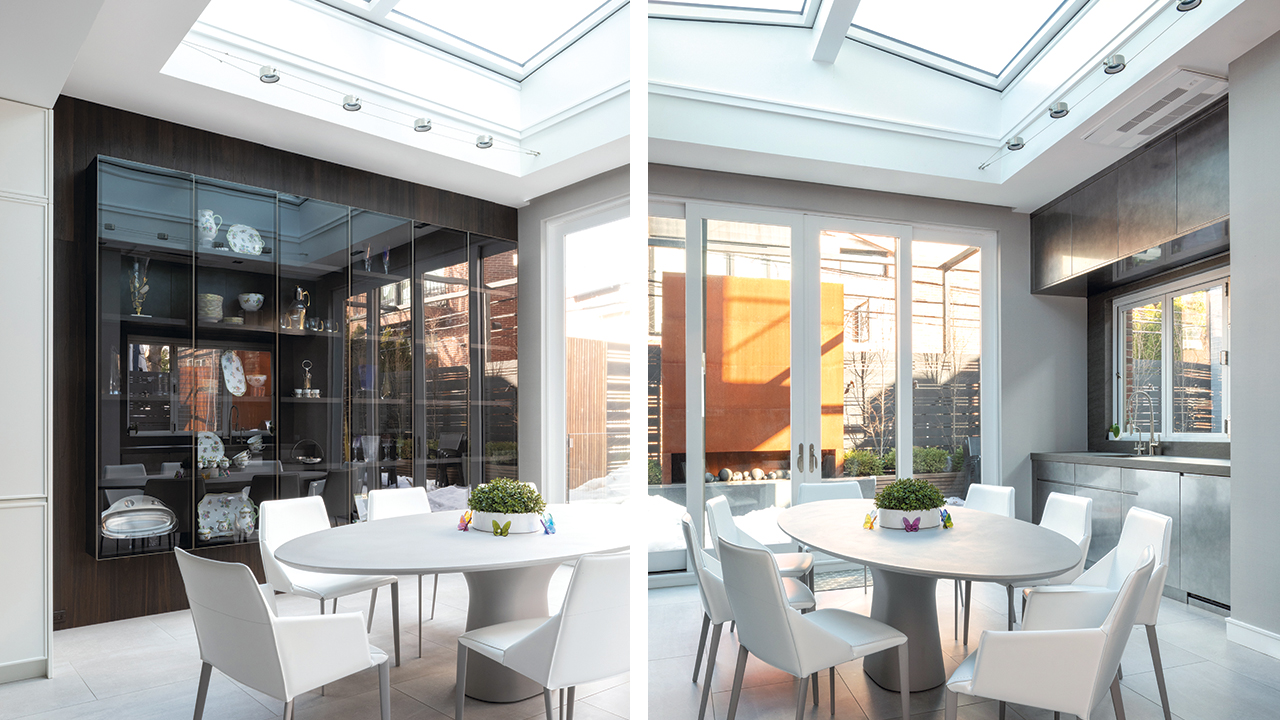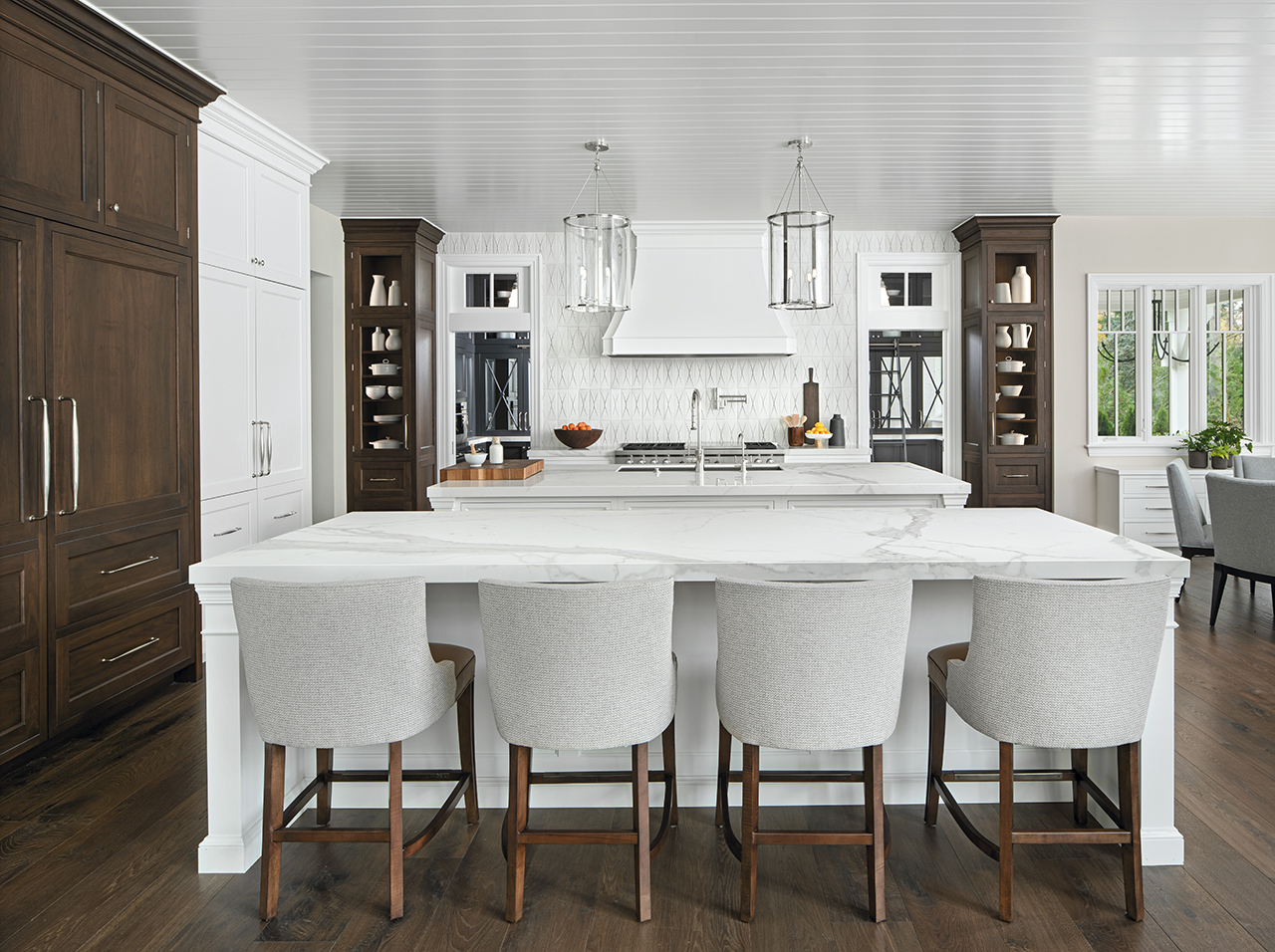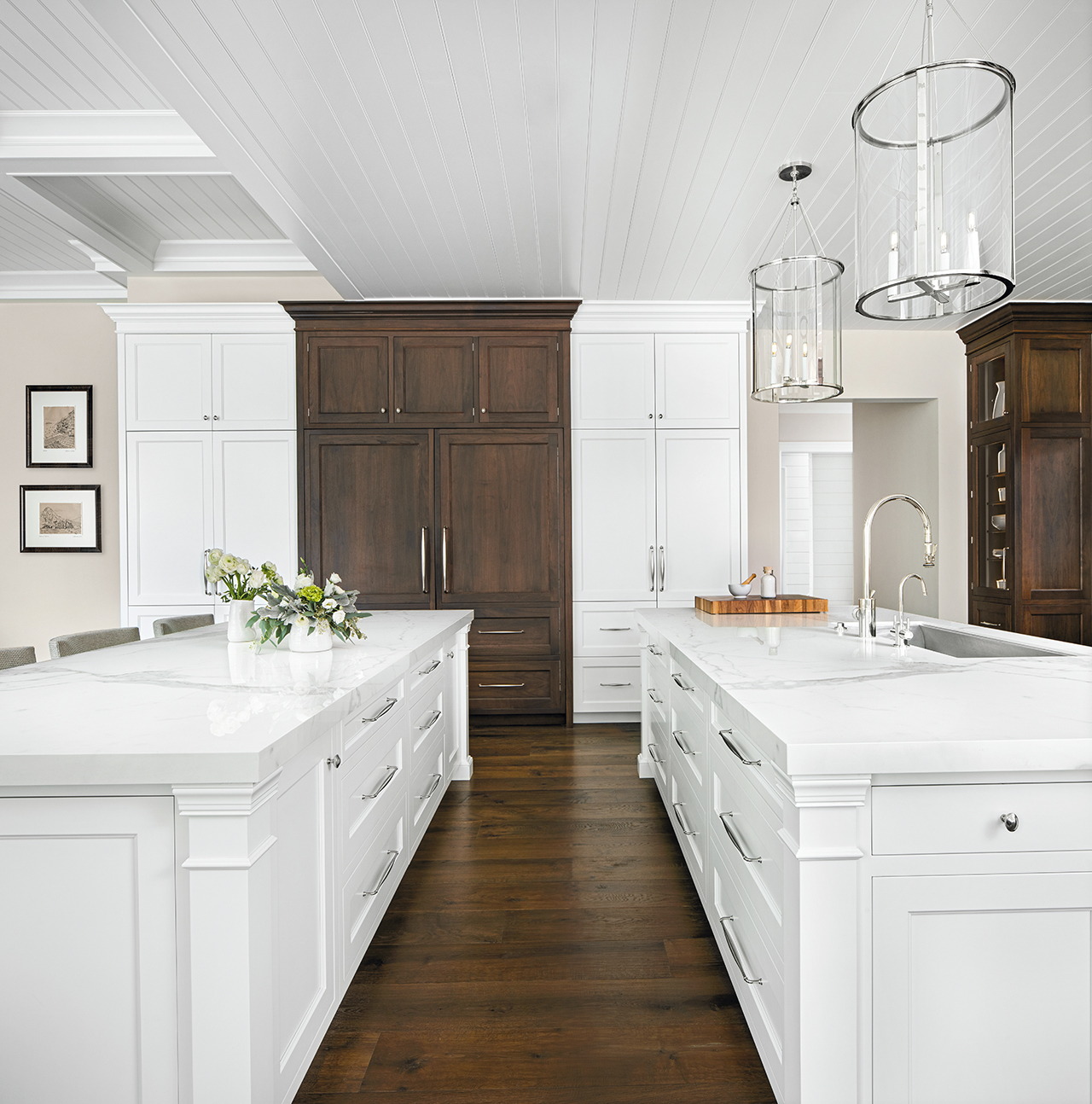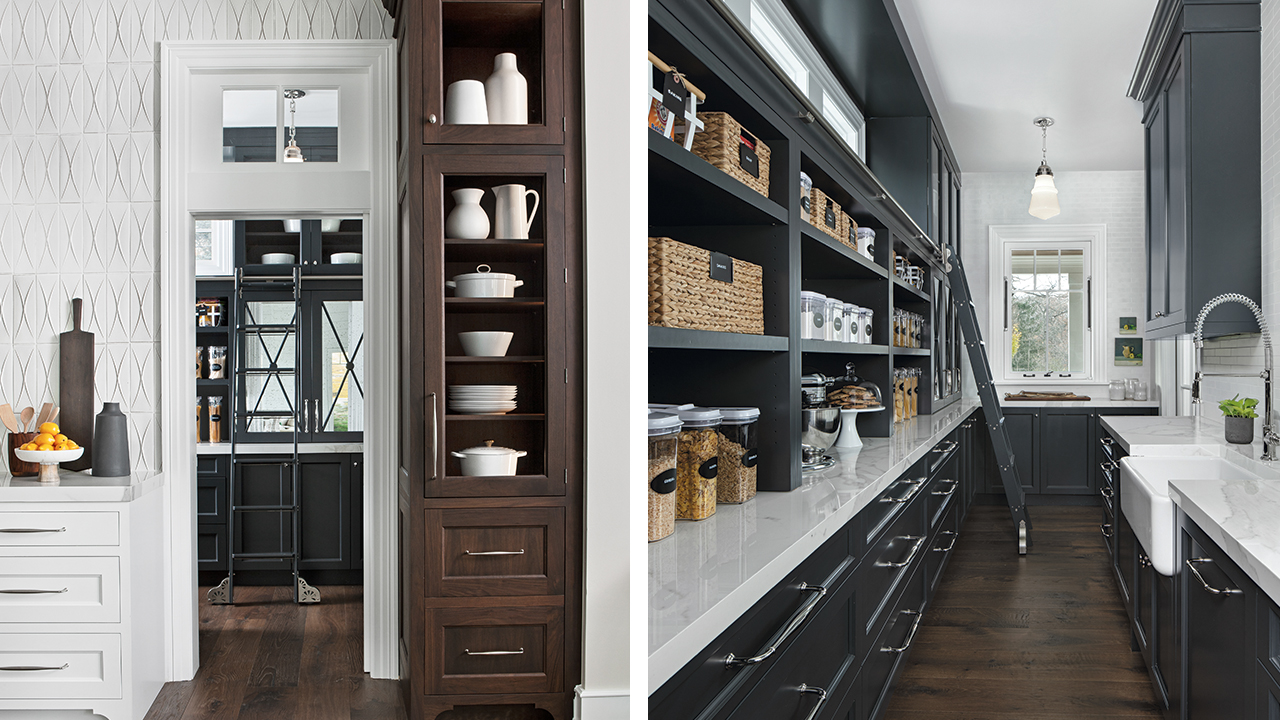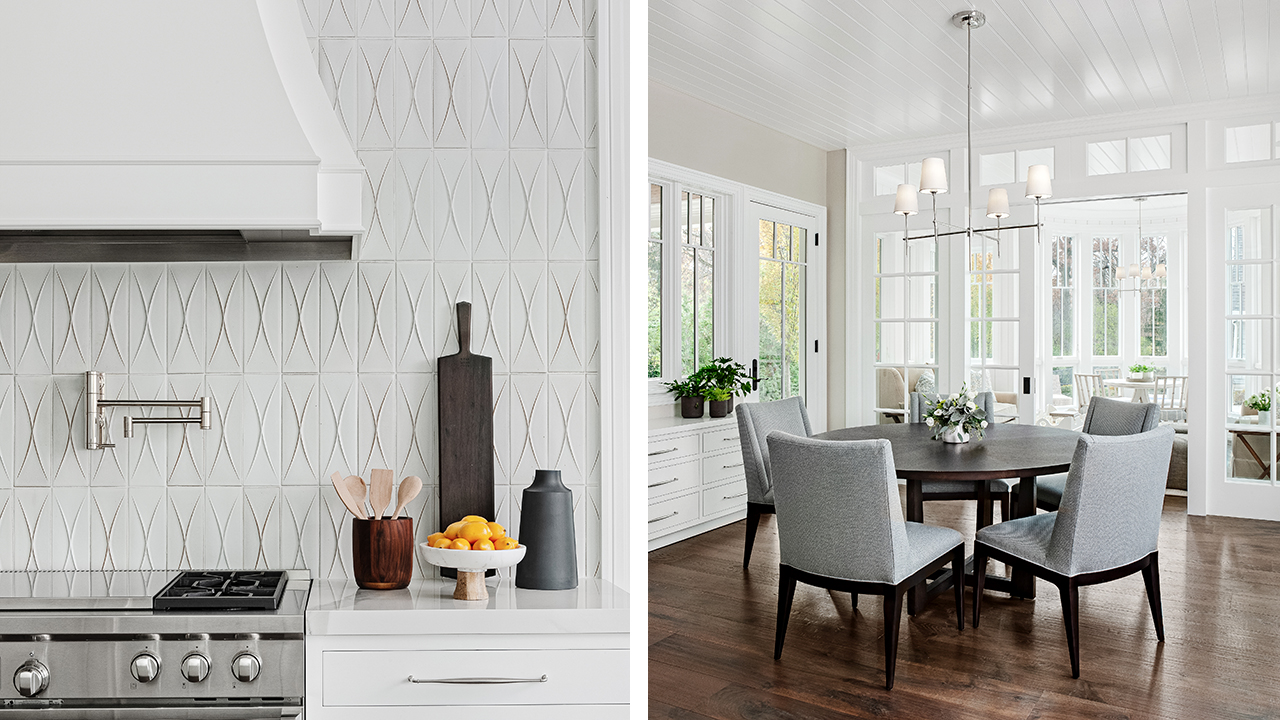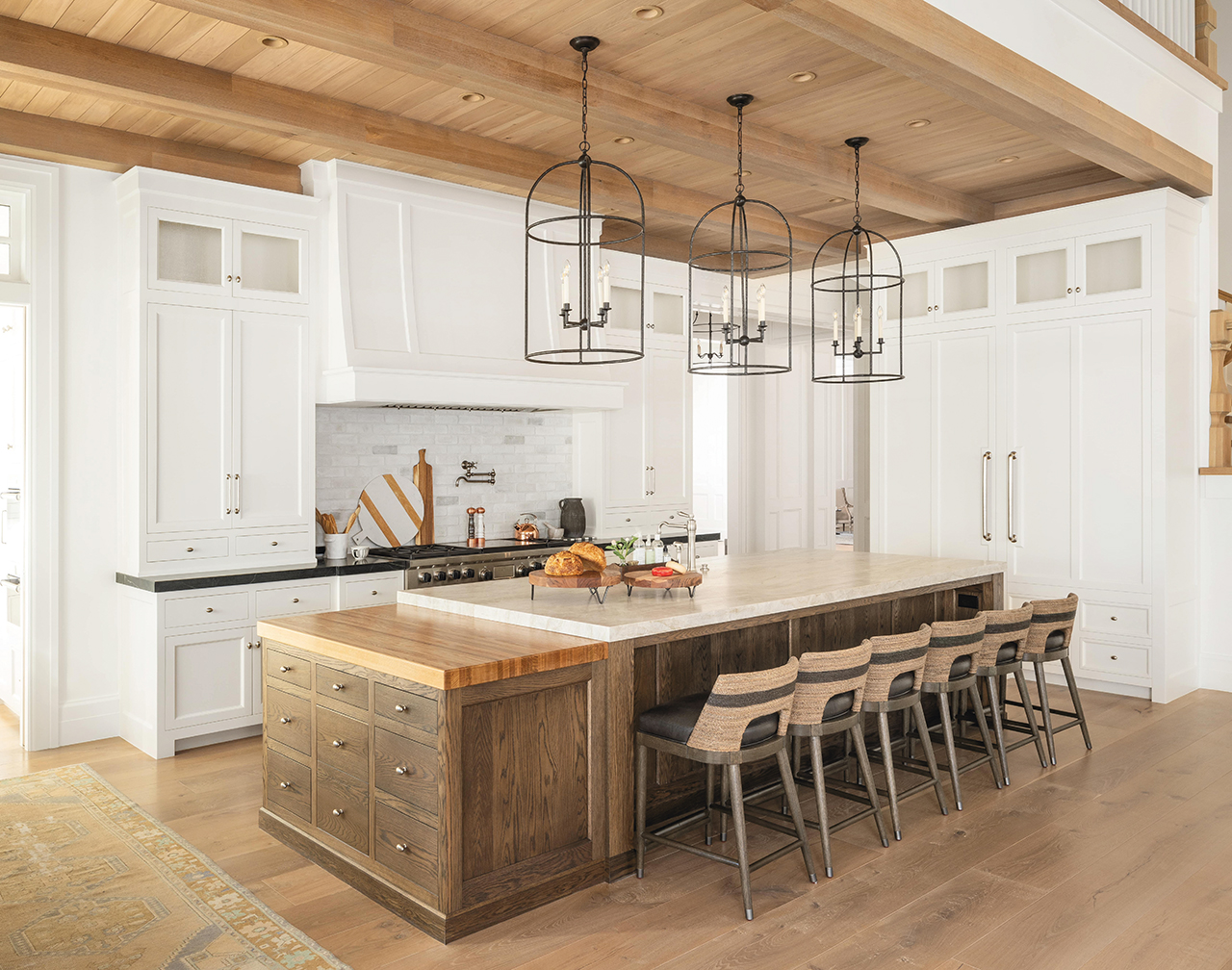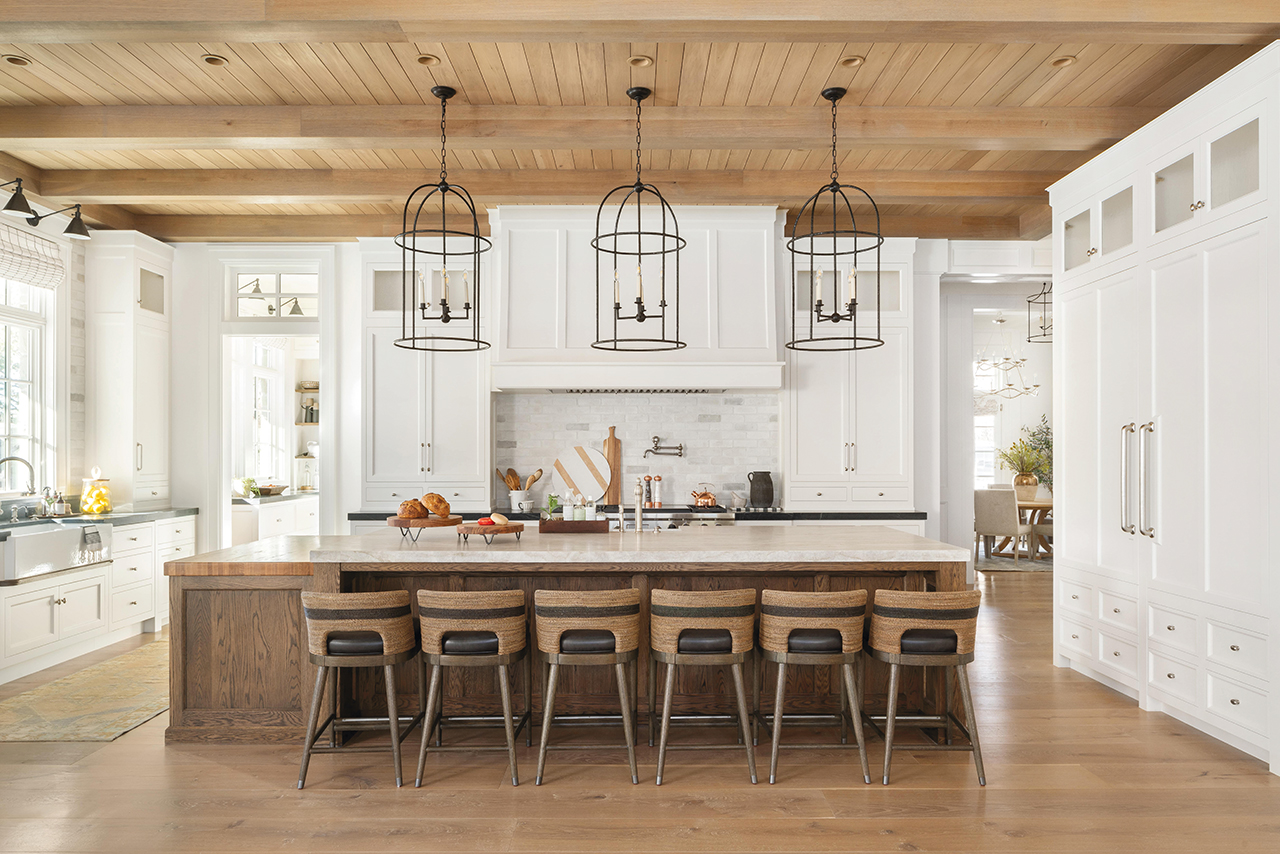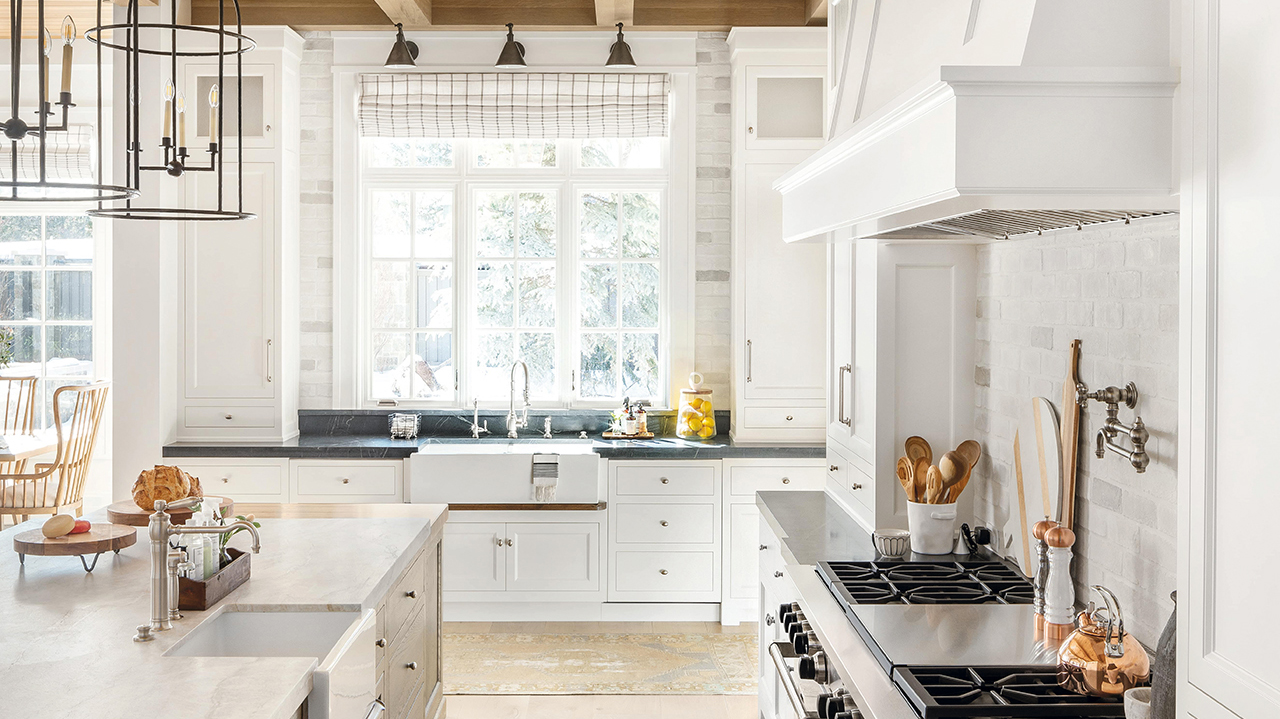2021 Award Winners
“Less is more” was a phrase heard often during the judging of the 2021 Kitchen & Bath Design Awards, sponsored by Kitchen & Bath Design News. Six of the industry’s leading professionals gathered to assess the entries, and while all were struck by the beauty of the entries, they gravitated toward the designs that were streamlined, well thought-out and didn’t try to do too much within the space.
The right details were also key to the winning designs. Clever storage tucked into niches, paneled appliances that deliver a more cohesive look and exceptional cabinets, lighting and hardware were among the elements that elevated the leading entries.
The best of design is what is being celebrated in the 33 spaces that have been named winners of the 2021 Kitchen & Bath Design Awards. Over 200 projects were judged in 11 categories: Best Kitchen Over $225,000; Best Kitchen $150,000-$225,000; Best Kitchen $75,000-$150,000; Best Kitchen Under $75,000; Best Specialty Kitchen; Best Master Bath Over $100,000; Best Master Bath $50,000-$100,000; Best Master Bath Under $50,000; Best Powder Room; Best Showroom, and Best Specialty Project.
The prestigious judging panel for the awards included:
• Peter Cardamone, Bluebell Kitchens, Wayne, PA
• Laura Giampaolo, Nu-Way Kitchen & Bath, Utica, MI
• Laurie Haefele, Haefele Design, Santa Monica, CA
• Sarah Kahn Turner, Jennifer Gilmer Kitchen & Bath, Chevy Chase, MD
• Linda Larisch, CMKBD, DESIGNfirst Builders, Itasca, IL
• Doug Walter, CMKBD, Doug Walter Architects, Denver, CO
Each of the projects was evaluated on multiple points, including: aesthetic appeal, functionality of the space, attention to detail, handling of unusual situations, originality, selection of colors and finishes, and overall impression. The judges also provided design feedback to all of the entrants.
The judging panel was pleased to see a departure from the ever-popular white and gray cabinets. “I actually loved the moody, dark, really dramatic kitchens, and the winners were the ones that had the dark and moody feel in contrast to the light,” stated Haefele. She noted the added use of natural woods, “which have a lot of warmth. Black kitchens have been around for a while, but integrating the lighter wood makes them less stark and more warm.”
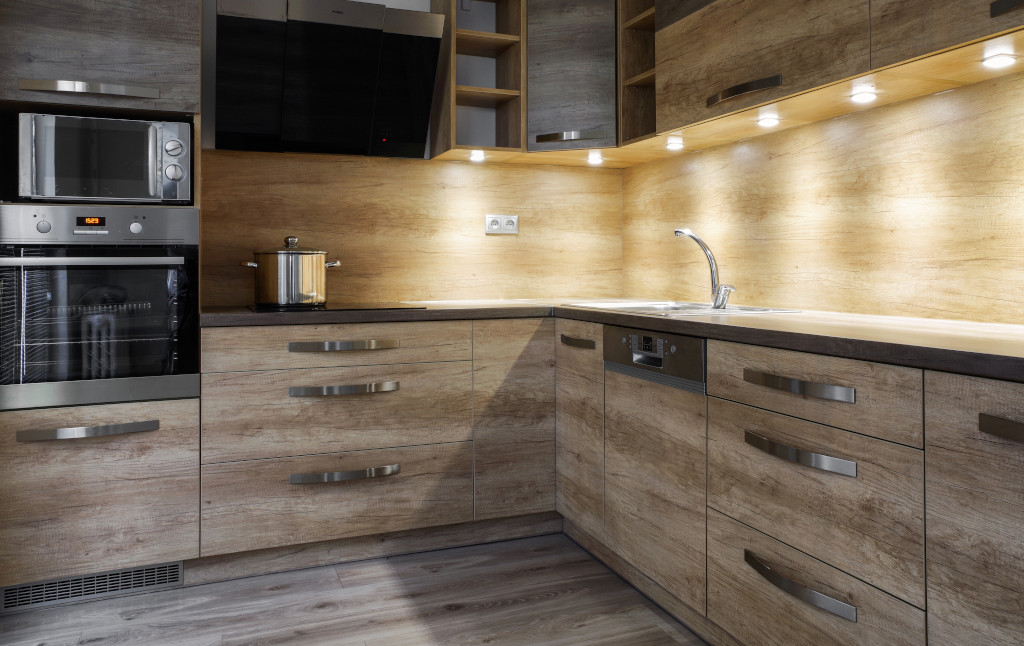
“There was a ton of black mixed with naturals,” concurred Giampaolo, along with stone features. “It was very organic, with a lot of warm tones.”
“We saw a lot of moody tones, darker woods, the use of metals and metal paints,” added Kahn Turner. She noted that, while there were still several classic light and bright kitchens, the painted finishes were grays and mushroom tones – a softer, wispy palette.
Walter said that, while white is not dead, there were many shades of off white included. “Darker colors were very popular this year – dark green, navy in particular, and black,” he observed.
Larisch also noted additional combinations going on beyond the dark and light cabinets. “We saw mixtures of gloss and matte finishes, different pops of color, large windows with dark interiors, and different styles for hoods,” she offered.
But, she continued, “I just kept saying ‘less is more.’ Some designers tried to mix too many materials together and they just didn’t pull it off, versus other mixed materials that blended and seemed timeless.”
KEEPING IT SIMPLE
While Cardamone advocated for taking chances with design to stand out from the pack, he also stressed the importance of keeping things streamlined. “There’s a tendency to crowd an element like a tall refrigerator or place a wall oven next to a cooktop, with a hood squished in there. Instead, you should
let everything have room to breathe,” he stated.
“I’m excited to see people really embracing and stretching some of the cabinetry away from hoods and other things,” noted Kahn Turner. “Windows also give rooms a little more breathing space.” She notes the best designs “don’t try to cram as much cabinetry as possible into a small space, which can sometimes feel disjointed and a little heavy.”
Giampaolo agreed, noting that a few of the designs came across as forced, “like they were trying so hard to use the freestanding tub in the bath when there was no room for it. The designs that came off the best may not have had the most materials in them, but they were done correctly. They were sized, they were comfortable,” she explained.
IN THE DETAILS
“What separates a good project from a great project is attention to detail,” Walter stressed. He added that, sometimes, the judging between first and second place is so close, and what can make the difference is some small details. He was especially impressed by the dramatic hoods he saw, and the clever use of the sixth wall – the ceiling.
“I think we saw the cream rise to the top in the subtle details – the fit and finish,” concurred Kahn Turner. “Designers need to pay attention to the little things, such as pulling a cabinet panel forward so that it flushes out with the door, making sure that you have clearances, that your cabinets aren’t too spindly looking and narrow.”
The kitchens that stood out to Giampaolo were those that paid attention to unique details – finding usable space in otherwise unusable areas. “Some of the concepts with the hidden wine cubbies were amazing,” she offered.
“The ones that were outstanding were the ones that were unique and cohesive. They used textured walls. They used hidden storage units. They delivered multi-use designs, blending with the room next to it, making an entire space that you could eat, you could entertain, you could work, you could cook, you could do homework,” she added.
Haefele noted that, when first looking at an image, she knew instinctively when she liked it. “It’s when you really get into the details of the design that you can see why you liked it, that it’s so well thought out,” she reported.
Larisch stressed that the details need to be well thought out to make them work within the design, however. “The details need to make sense. You don’t want ones that are just randomly thrown in or had no thought process behind them,” she remarked. “You also need to take care of the details throughout the space and not miss an area. Every single part of that kitchen or bath should work cohesively through each turn.”
On pages 48-73, KBDN shares expanded coverage of the winning projects in the sixth annual competition. For more photos of this year’s winners, as well as insights from the panel of judges, visit www.KitchenBathDesign.com. 
VIEW ALL 2021 KITCHEN & BATH DESIGN AWARDS WINNERS
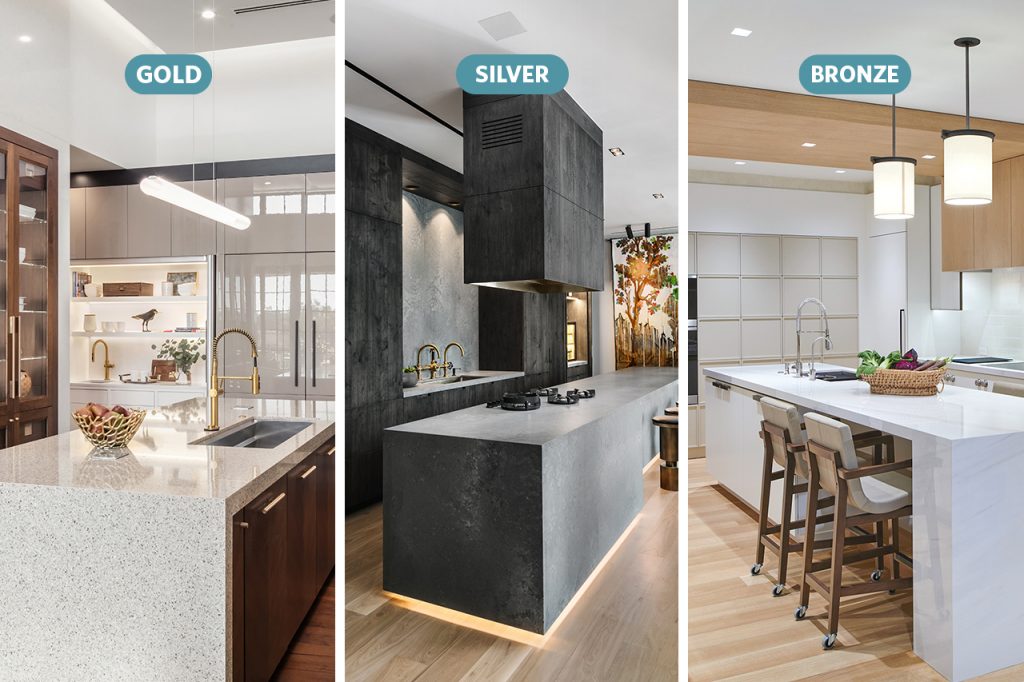
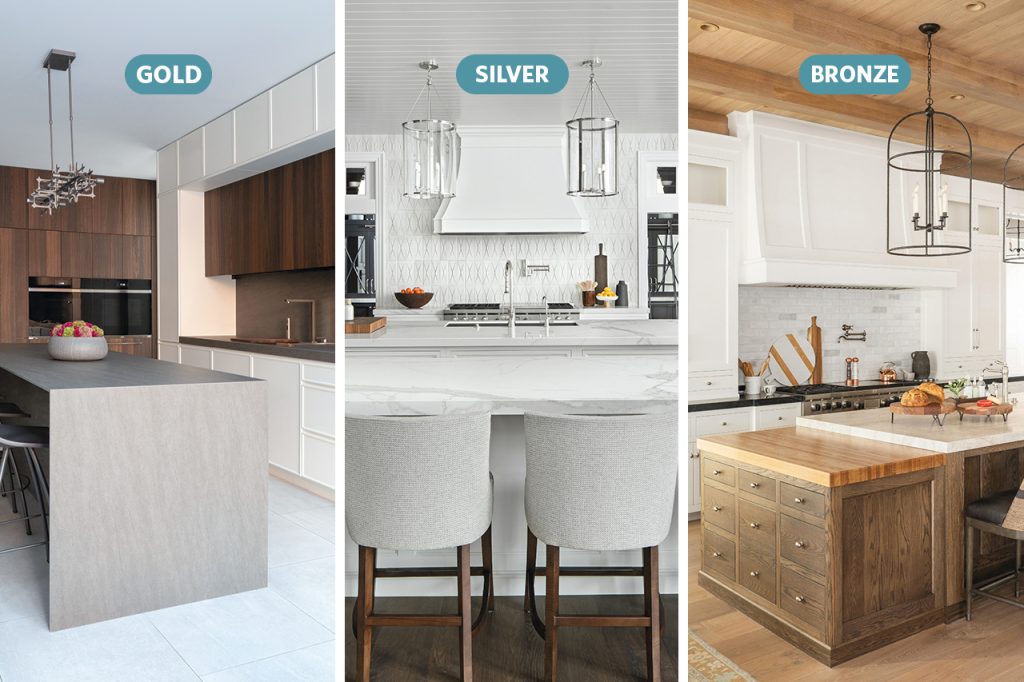
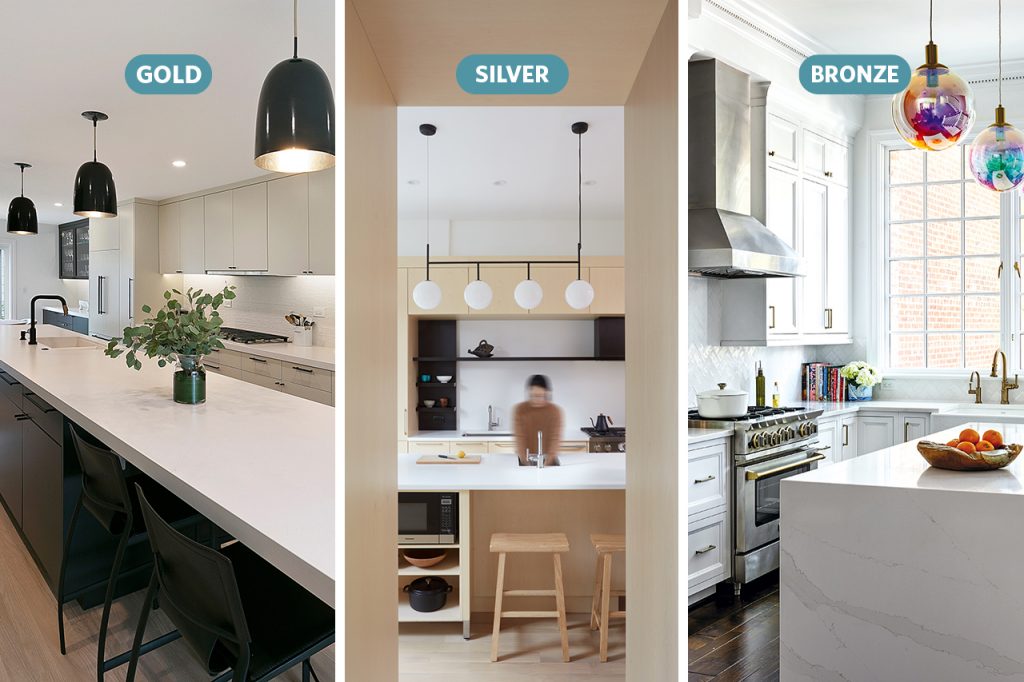
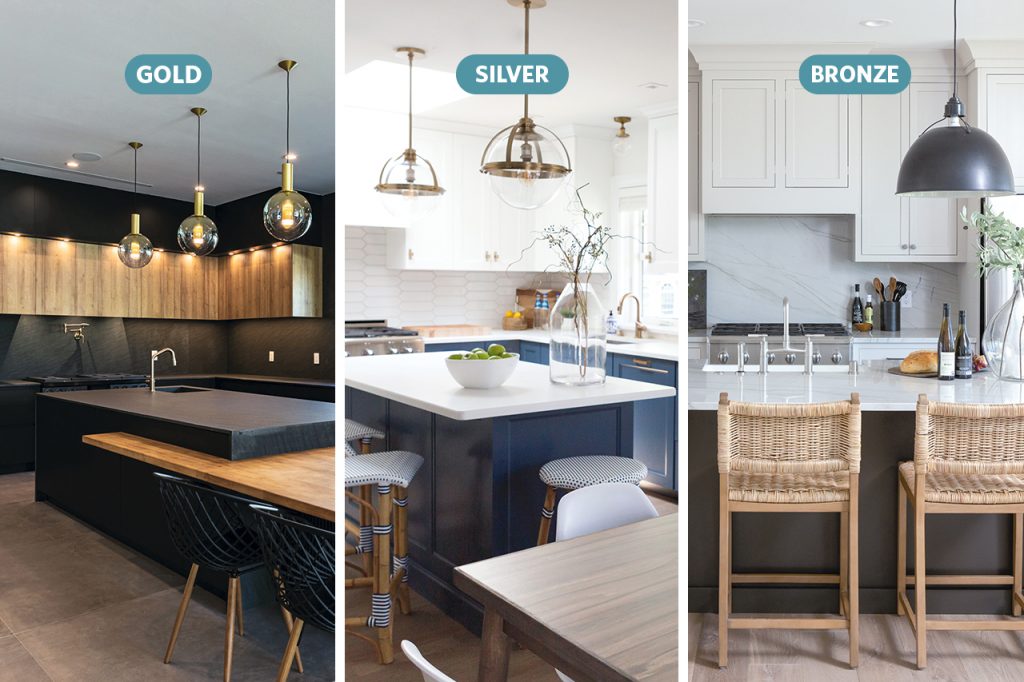
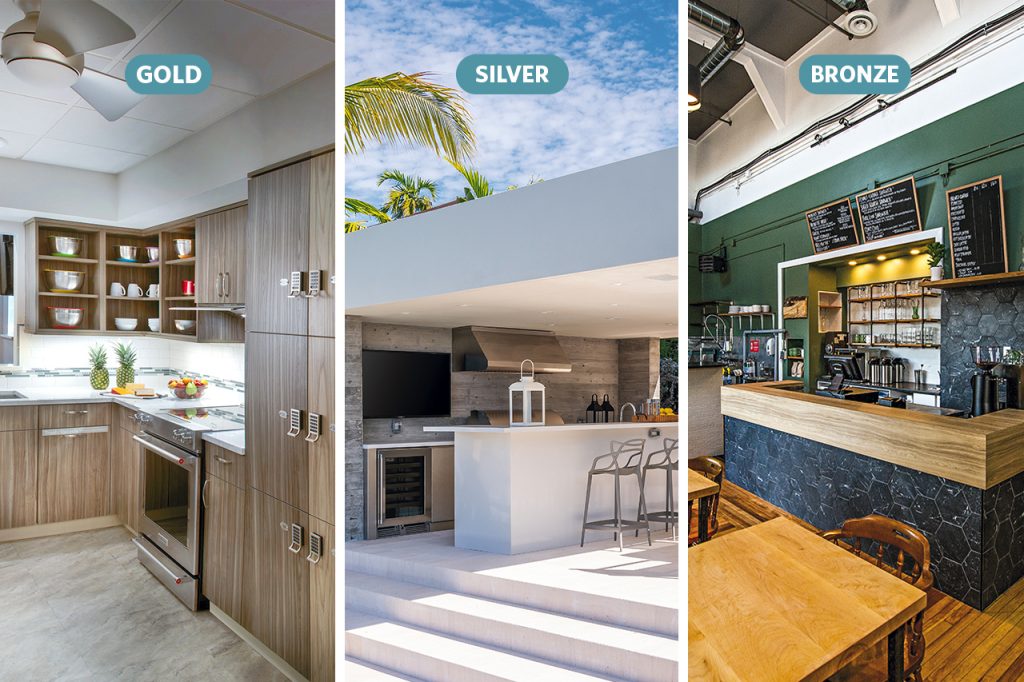
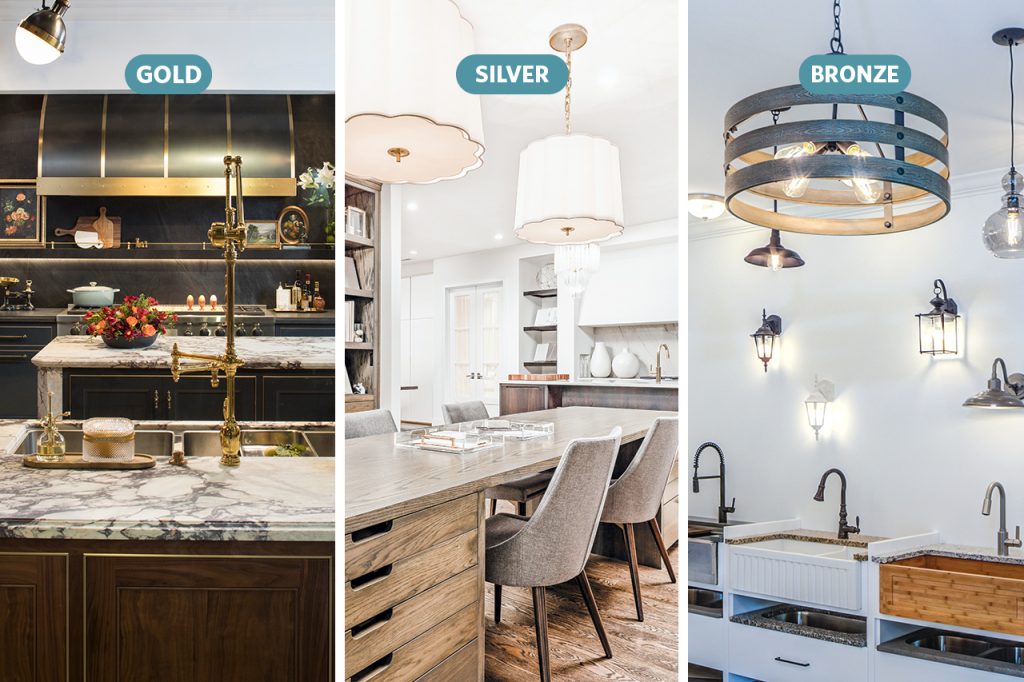
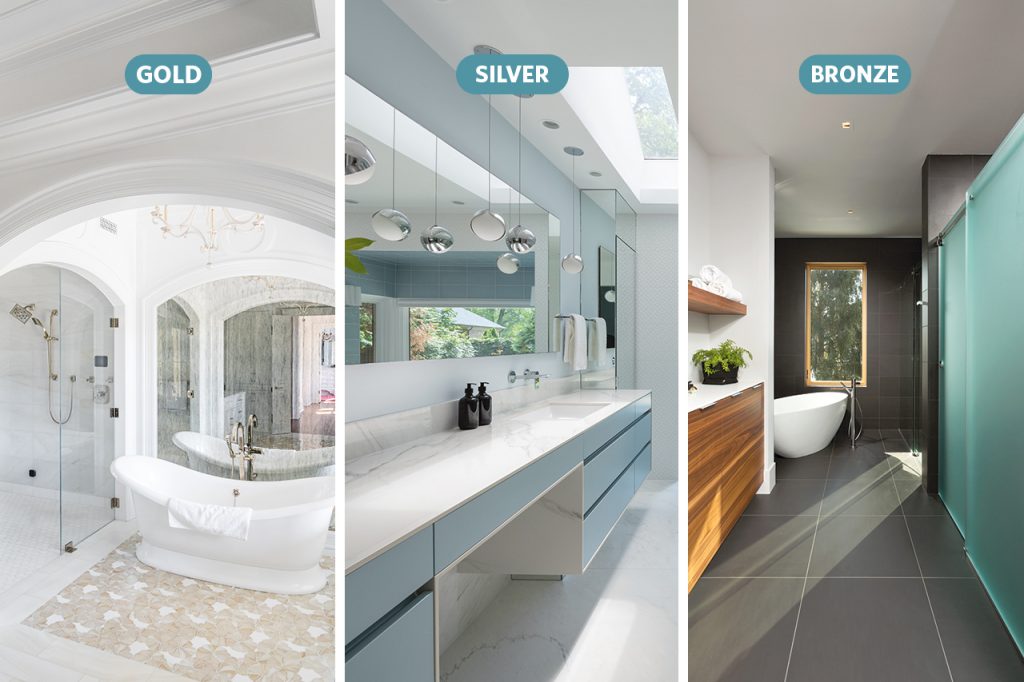
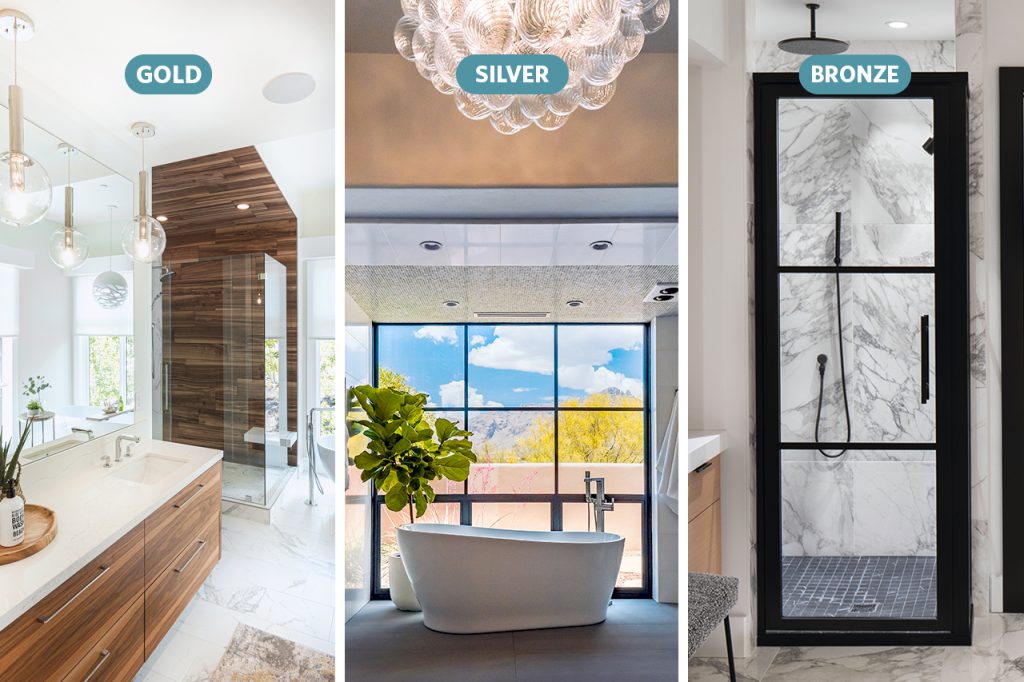
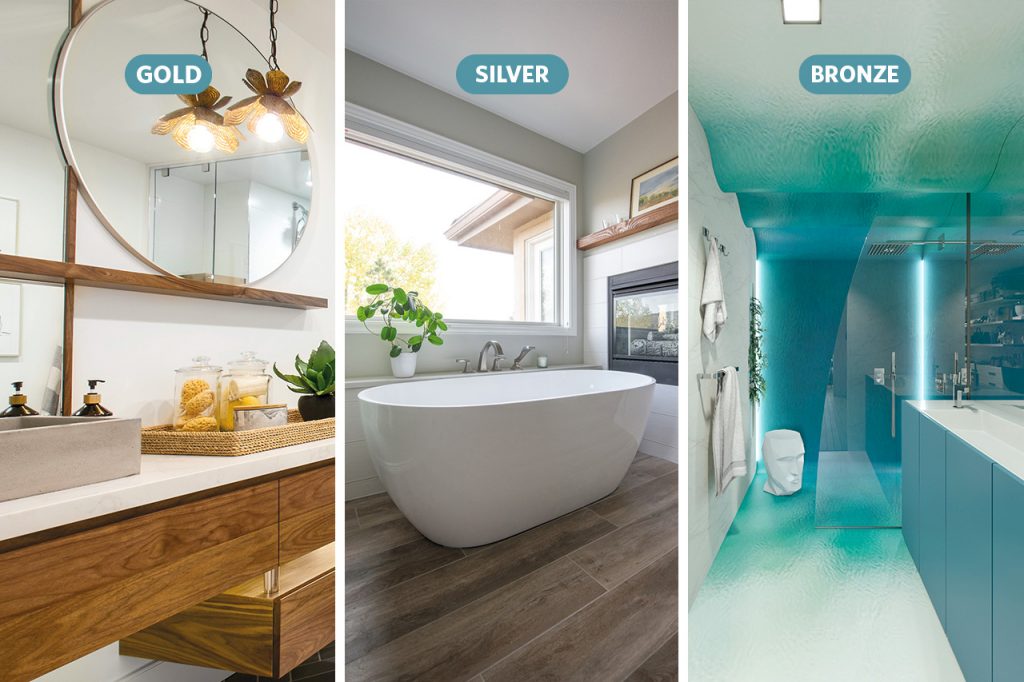
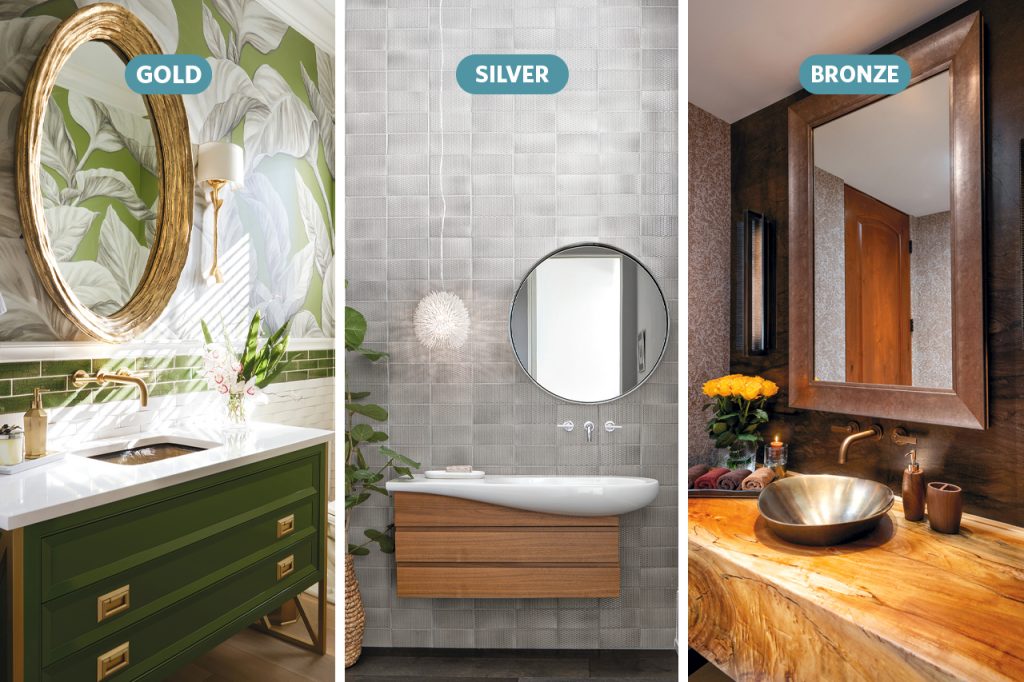
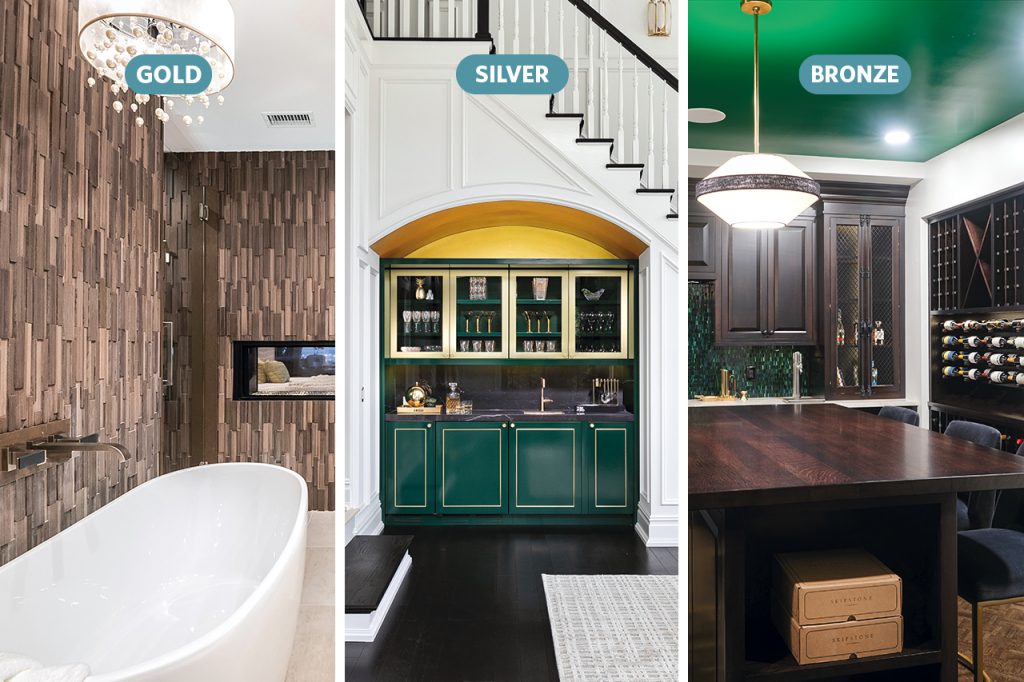
The post 2021 Award Winners appeared first on Kitchen & Bath Design News.
2021 Best Kitchens Over $225,000
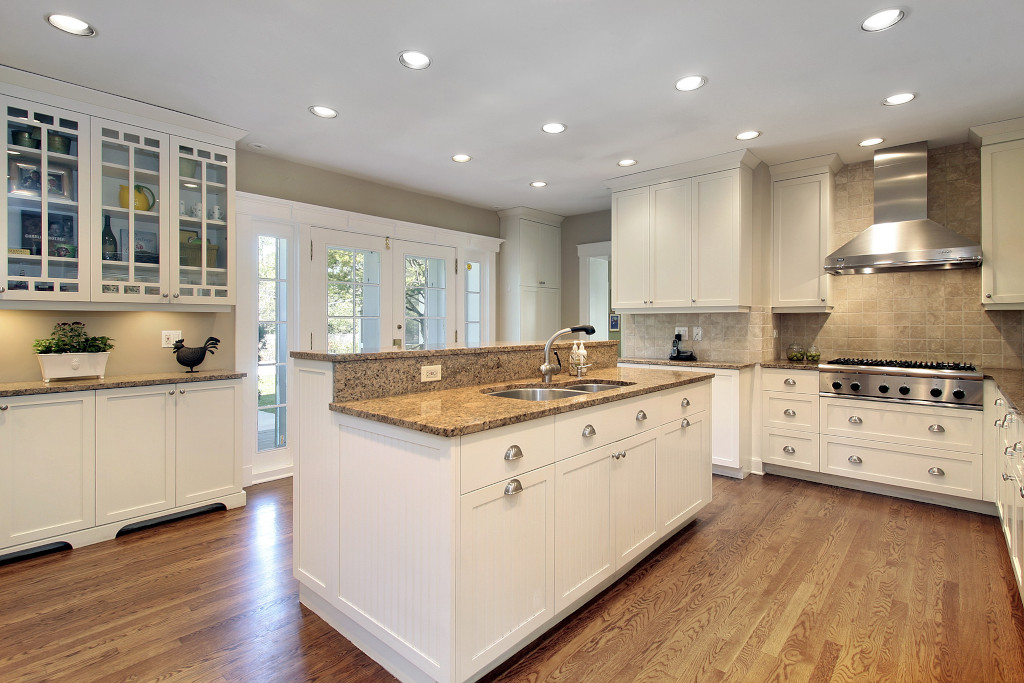
GOLD
Contrasting Colors
TODD ATKINS
Phil Kean Design Group, Winter Park, FL
Photos: Uneek Image
The objective for the kitchen design team – which included designer Todd Atkins along with architect Phil Kean and interior designer Keri Ferguson – for the 2021 New American Home was to demonstrate how the space could be beautifully designed using a combination of multiple colors and textures.
Cabinets from Plato Woodwork’ INOVAE Classic line are used in contrasting colors of walnut, creamy whites, dark carbon, sparkling champagne and reflective glass in gray. A traditional walnut finish is showcased on the 10′ illuminated walnut hutch, which includes glass-front doors that highlight the contents. Walnut is also used in a chevron pattern on the island cabinetry, interior cabinetry in the TV niche, and custom hood built using a Panasonic 36″ range hood.
The kitchen also features a range of interior storage options, including peg boards, spice racks, utensil dividers and roll-outs. Specialty spaces including a coffee bar and TV niche can be closed off and hidden behind their retractable bi-fold doors.
Modo cabinet hardware from Schaub & Company adds a touch of gold, along with the Kohler Crue Semi-Professional Kitchen Faucet. The faucet is paired with Kohler’s Prolific Undermount Sink.
The Signature Kitchen Suite appliances deliver luxury built-in cooking and refrigeration options. Included are: 48″ Dual-Fuel Range with Sous Vide and Induction, 30″ Double Wall Oven with Steam-Combi and Microwave Oven Drawer, all in stainless steel, as well as 30″ Integrated Panel-Ready Column Refrigerator and Freezer units, and Quadwash Panel-Ready Dishwasher.
To contrast the Engineered Natural Walnut flooring, the designers used a bright white Viatera Quartz from LG Hausys for both the countertops and the backsplash. Idril Sconces in brushed nickel, as well as the Loop Linear fixture in brushed aluminum above the island – all from Kichler – provide illumination.

SILVER
Form & Aesthetic
STEVEN COOPER
Cooper Pacific Kitchens, West Hollywood, CA
The request for this project was to create a kitchen that felt architectural rather than noticeably “kitchen.” Steven Cooper, in collaboration with interior designer Thomas Schoos of Schoos Design, chose Form and Aesthetic as the key objectives needed to create a high-functioning kitchen that would allow for caterers and chefs to prepare for large parties and entertaining.
Since the client doesn’t cook but entertains quite a bit, concealed appliances were highly desired. The column refrigerator with freezer and Gaggenau dishwasher were integrated, and a drop-down flat screen television can be hidden from view when not in use. A custom hood that matches the Cooper Pacific Kitchens Custom 861 cabinets hovers over the island, which houses five independent burners from Pitt Cooking. A Gaggenau speed oven and two single ovens disappear behind pocket doors and feature a custom temperature gauge and safety shutoffs in case the doors are ever closed over the units while in operation. A bar area with Thermador Wine Undercounter Refrigerator also vanishes from view.
Balancing the mix of texture in the 351-sq.-ft. penthouse kitchen was the focus. Oak logs, sourced from German forests, give the space an organic, tactile quality, while cement and stone augment the more austere architecture. The Caesarstone Rugged Concrete quartz countertop and backsplash blend with the overall aesthetic, while the Waterworks Regulator faucets and custom bronze sink from Rocky Mountain Hardware enhance the industrial feel.

BRONZE
Contemporary Condo
JENNIFER GILMER & MEGHAN BROWNE
Jennifer Gilmer Kitchen and Bath, Chevy Chase, MD
Photos: Anice Hoachlander, Anice Hoachlander Photography
The contemporary style of this full condo remodel needed to be reflected in the kitchen as well, where the desire for more open space and increased size were primary. Jennifer Gilmer and Meghan Browne, working alongside Greg Wiedemann of Wiedemann Architects, focused on these interests, along with having a more functional work triangle and providing seating for four in the 350-sq.-ft. room.
A focal-point back wall blends the Sub-Zero refrigerator and freezer columns into the space, with a narrow pantry finishing the look. On that same wall are a Miele convection oven and Miele Speed Microwave.
The Gaggenau cooktop was moved to the other side of the room so that the wall in the hallway could be reduced, a request of the clients. The Amore hood above was hidden by connecting it to a ceiling panel, with a cabinet of the same color reaching down to the countertop. This cabinet has bi-fold/retractable doors and houses the coffee machine and other amenities.
A peninsula was created to the left of the bi-fold cabinet, which offered a landing space at the end of the hallway.
Contemporary cabinets from Premier Custom Built are featured in white and pale wood tones, topped with Bianco Lassa marble with a waterfall edge. Along the wall, the countertop is met by handmade ceramic tile from Pratt + Larson. The island now houses The Galley sink, paired with a ROHL faucet, with a Miele dishwasher to the side. A Miele warming drawer and Sub-Zero undercounter refrigerator are also featured in the space.
VIEW ALL 2021 KITCHEN & BATH DESIGN AWARDS WINNERS
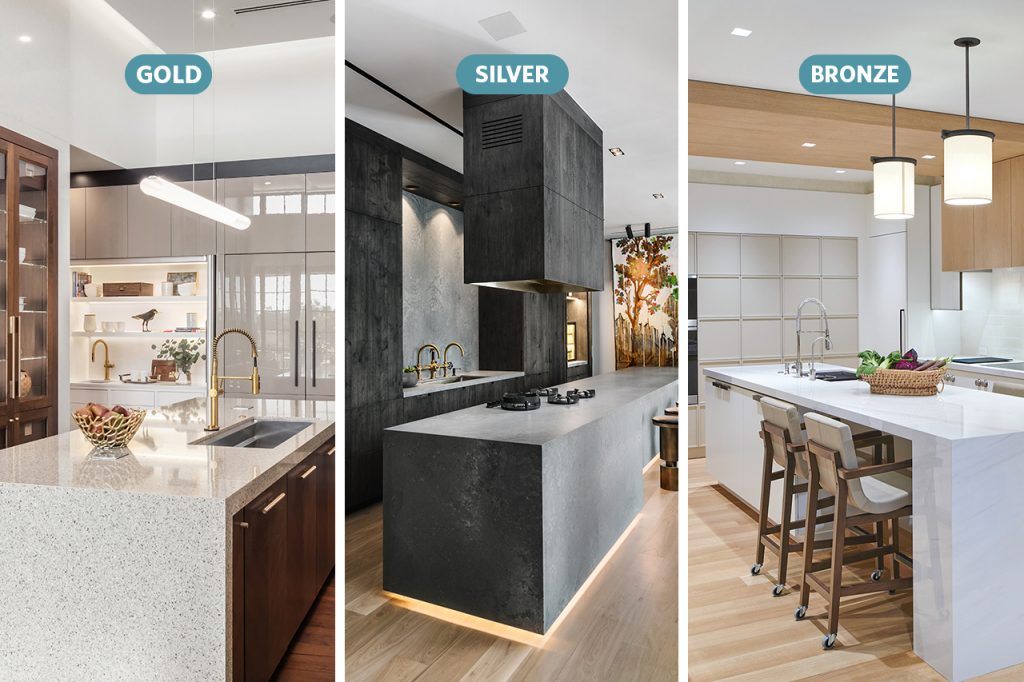
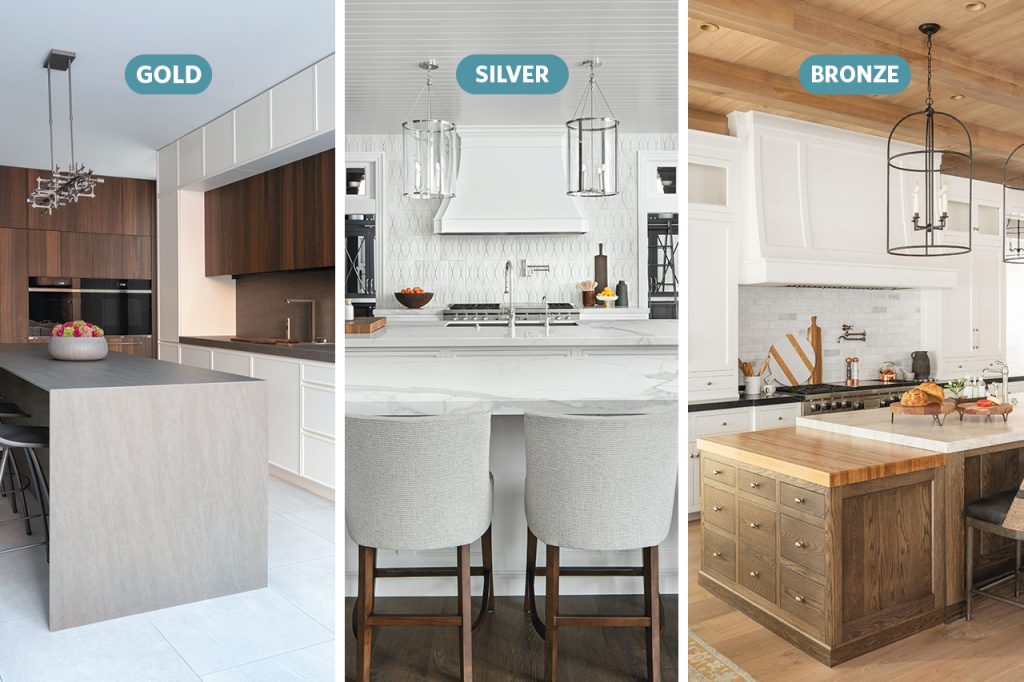
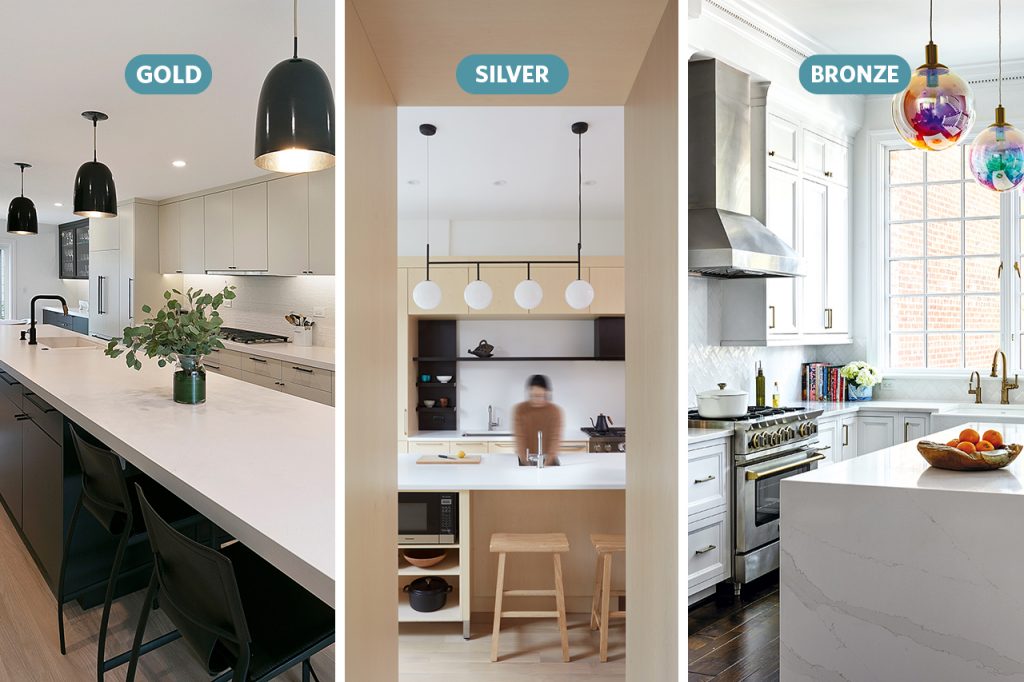
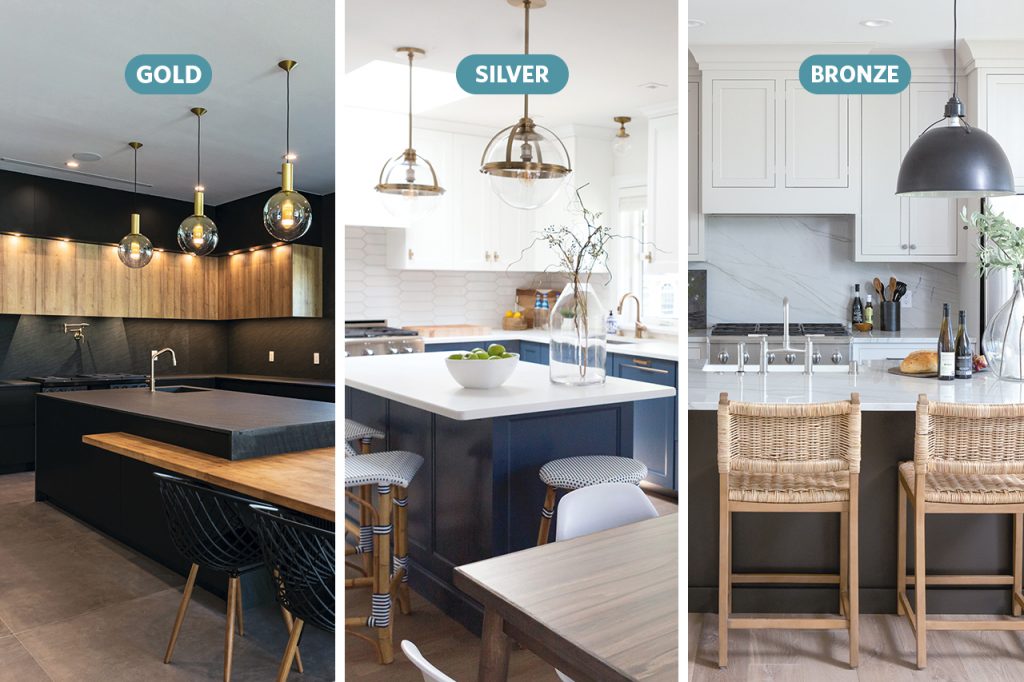
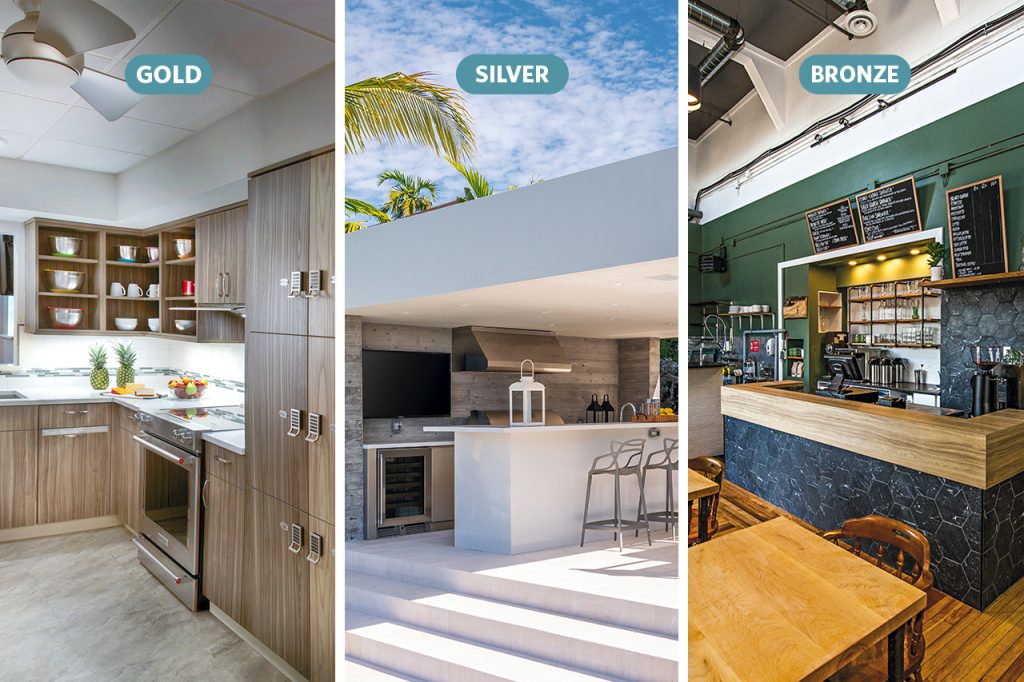
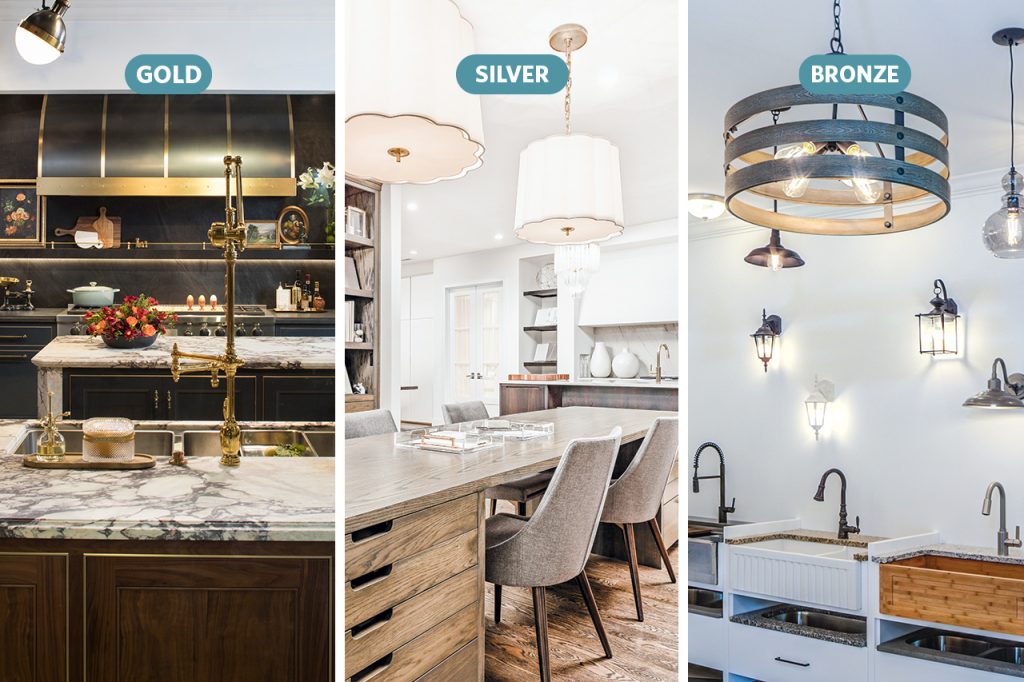
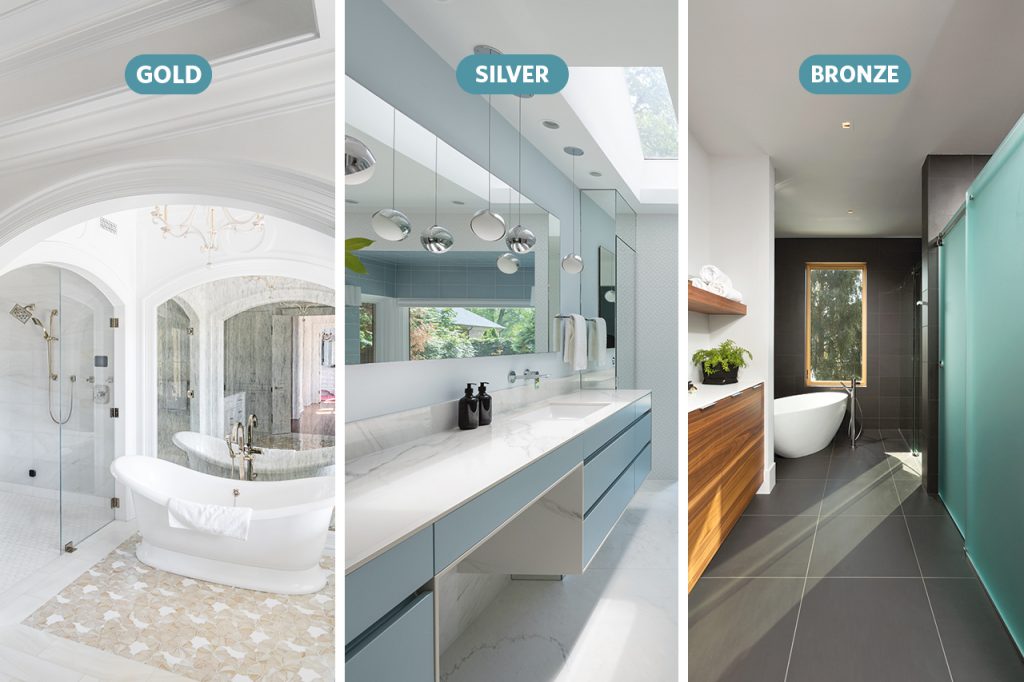
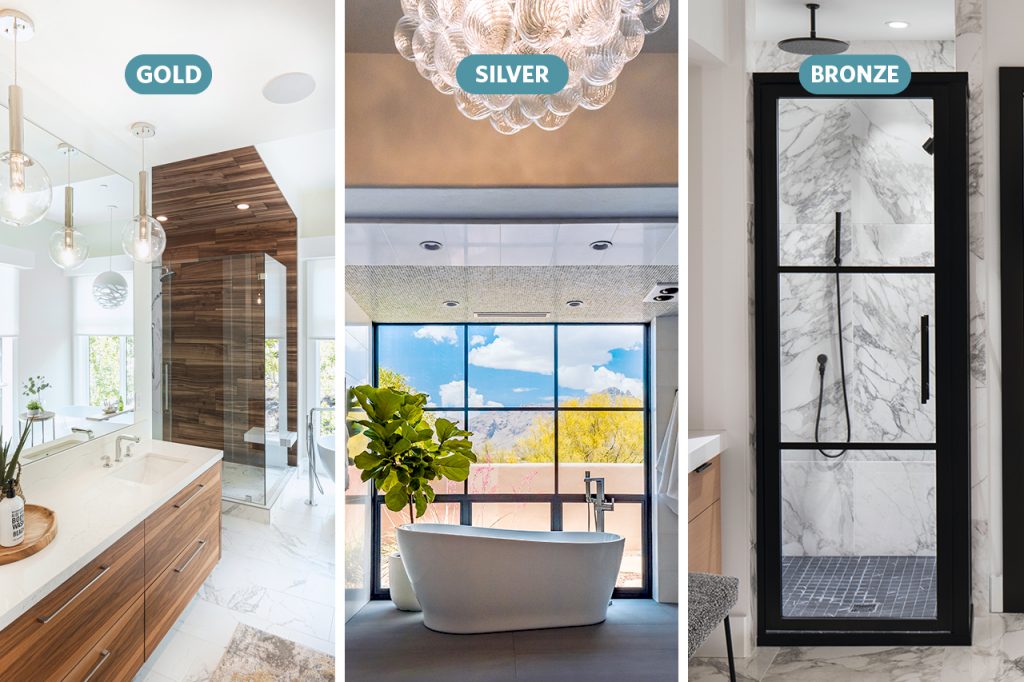
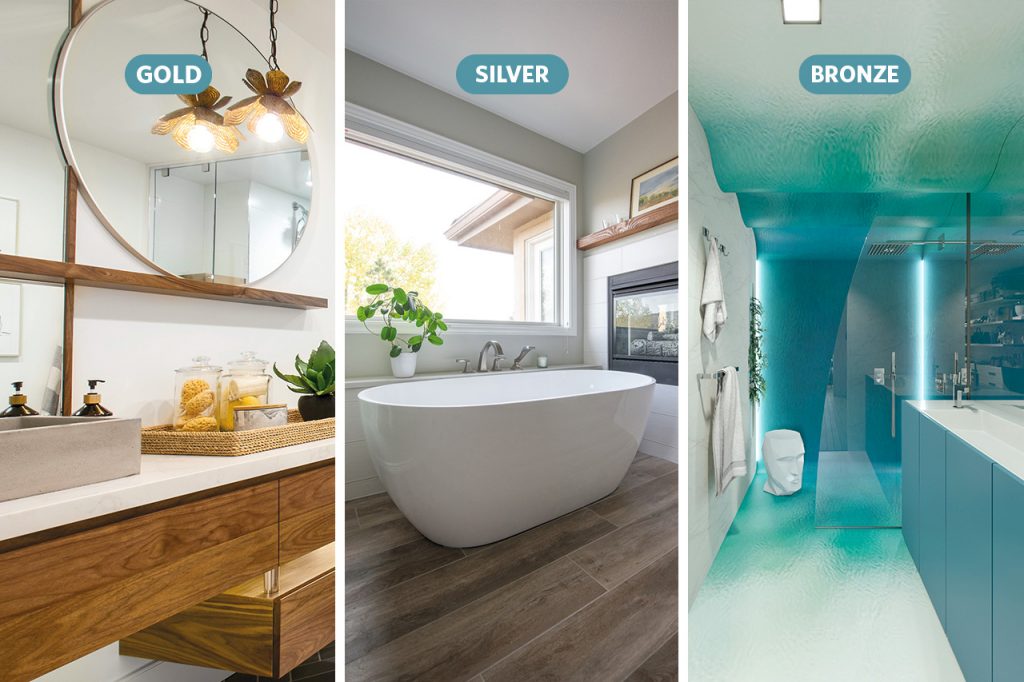
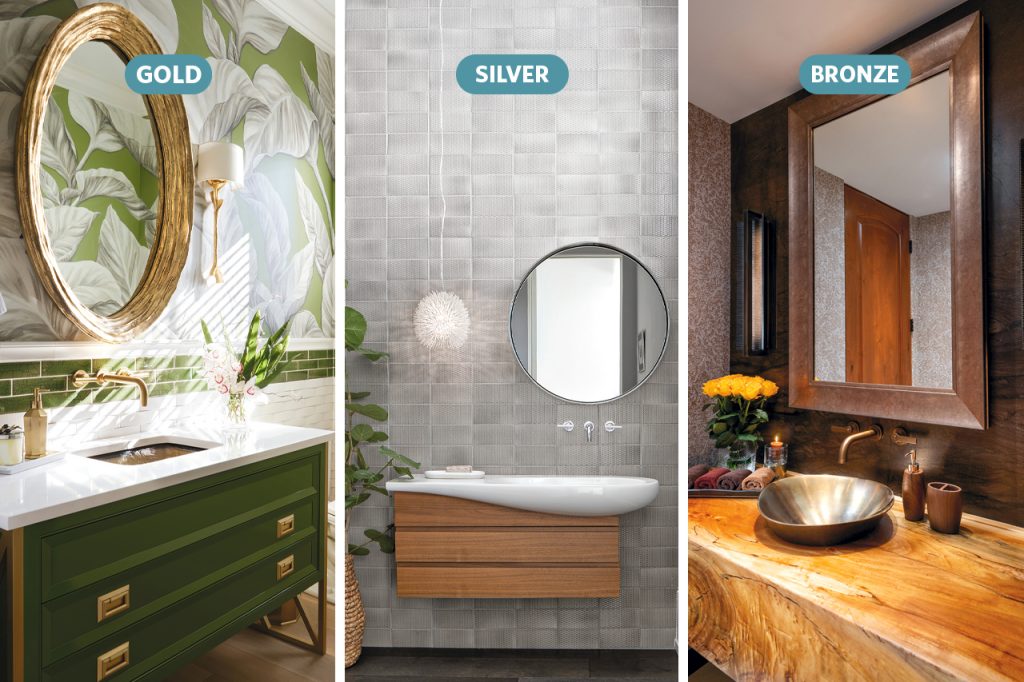

The post 2021 Best Kitchens Over $225,000 appeared first on Kitchen & Bath Design News.
2021 Best Kitchens $150,000–$225,000
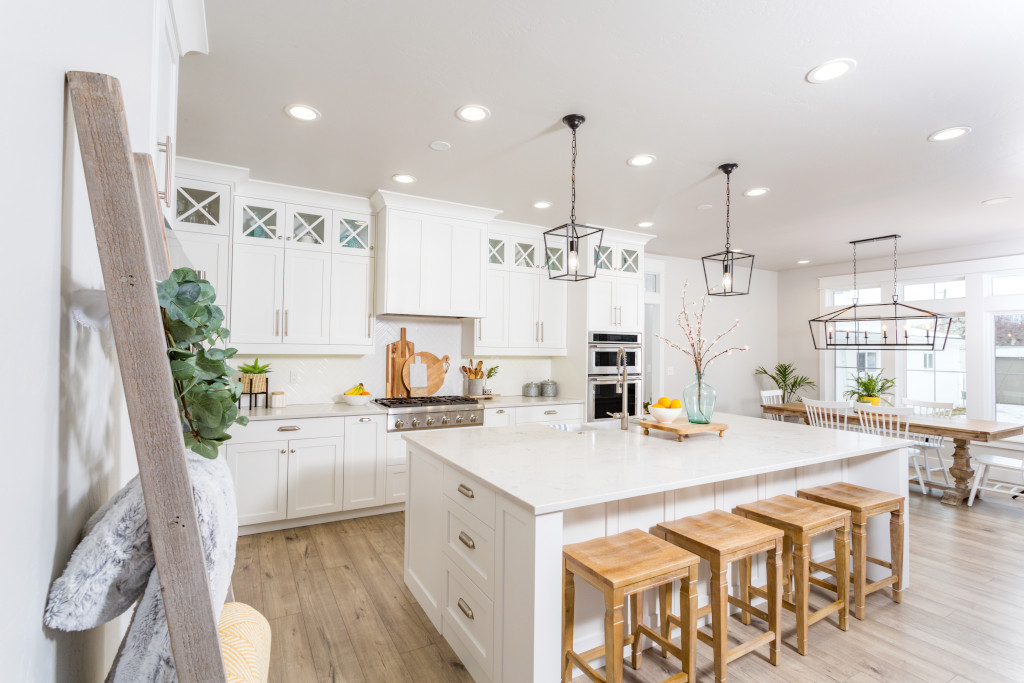
Photos: Raquel Langworthy Photography
This renovation in Brooklyn, New York transformed a tired, outdated, traditional kitchen into a modern, sleek, state-of-the-art Kosher kitchen and breakfast area. A desire for a brighter space and improved layout led Amir Ilin, in coordination with the team from Rachel and Rebecca Design in Brooklyn, to remove a peninsula that divided the kitchen and breakfast area and push out the walls for additional square footage.
Awkward columns in the main space were disguised through the use of clever custom cabinetry by DOCA, with all of the cabinets PEFC certified from sustainably managed forests. Basalt Gray countertops and backsplashes by Neolith tie in with the gray tones found in the woodgrain of the cabinetry, and are comprised of up to 52% recycled raw materials. Waterfall edges wrap the new center island for a distinctively modern look. The wood-tone cabinets are paired with matte white lacquer base cabinets, which allows the wood to stand out.
A small window was closed off, replaced by floor-to-ceiling windows in the breakfast nook. Glass-front cabinets in the space are inserted into dark wood panels and make the area feel larger.
The dark oak back wall that houses the appliances now gets natural light from the breakfast area. The space includes Wolf wall ovens and warming drawer, as well as a Sharp microwave drawer, Sub-Zero refrigerator, Monogram undercounter refrigerator and Bosch dishwasher.

SILVER
Double Take
LAUREN TOLLES
Maison Birmingham, Bloomfield Hills, MI
Designed for a large family that loves to entertain, this kitchen features two large islands, one for prep and one for serving, as well as a full prep kitchen hidden behind the range. In the main space, the homeowners wanted the cabinets to have the appearance of furniture, so that the kitchen would blend seamlessly into the adjacent living spaces. Lauren Tolles, working in conjunction with Marianne Jones LLC, selected custom cabinets manufactured by Quality Custom Cabinetry to achieve this look.
The wall of tall cabinets features a morning bar with a coffee maker and a toaster, as well as an evening bar with wine and liquor. Both are hidden behind oversized retractable doors on either side of the refrigerator and freezer walnut armoire.
A prep kitchen was essential for allowing plenty of storage, and a space to prep and cater that is out of sight from the main living areas. An integrated rolling ladder allowed Tolles to maximize the storage up to 12′ high, and antique mirrored doors positioned at the two entrances to the prep kitchen allow for some additional aesthetic appeal while hiding dry goods and small appliances.

BRONZE
Formal Farmhouse
HEIDI STEWART, KAYCEE METEKINGI, BROOKE CUDE
Lucca Design, Draper, UT
Photos: Scott Davis Photography
This renovation project delivered on the homeowners’ desire for a cozy and livable farmhouse kitchen that avoided any form of overly trendy details. Heidi Stewart, Kaycee Metekingi and Brooke Cude achieved this balance by including timeless elements, such as the farmhouse double bowl sink and fireclay farmhouse apron sink, both manufactured by and paired with faucets from Waterworks, and small bead inset custom cabinets by Christopher Scott finished with Ashley Norton’s Egg knobs. Countertops are by Stone Selection, with the island in Taj Mahal and the prep areas in Soapstone Black. The backsplash is Chalk Dust, part of Brick Design’s Modern Collection. Wolf and Sub-Zero appliances are featured throughout.
The oak ceiling, custom made by Timberline Carpentry, was originally going to be two tone, with a white stain on the tongue-and-groove planks and a rich stain on the oak beams. After struggling to find the perfect colors that would bring the vision to life without detracting from the high-end custom feel, the design team and the homeowners fell in love with the bare oak once it was installed and decided to keep all of the wood uniform and natural.
VIEW ALL 2021 KITCHEN & BATH DESIGN AWARDS WINNERS
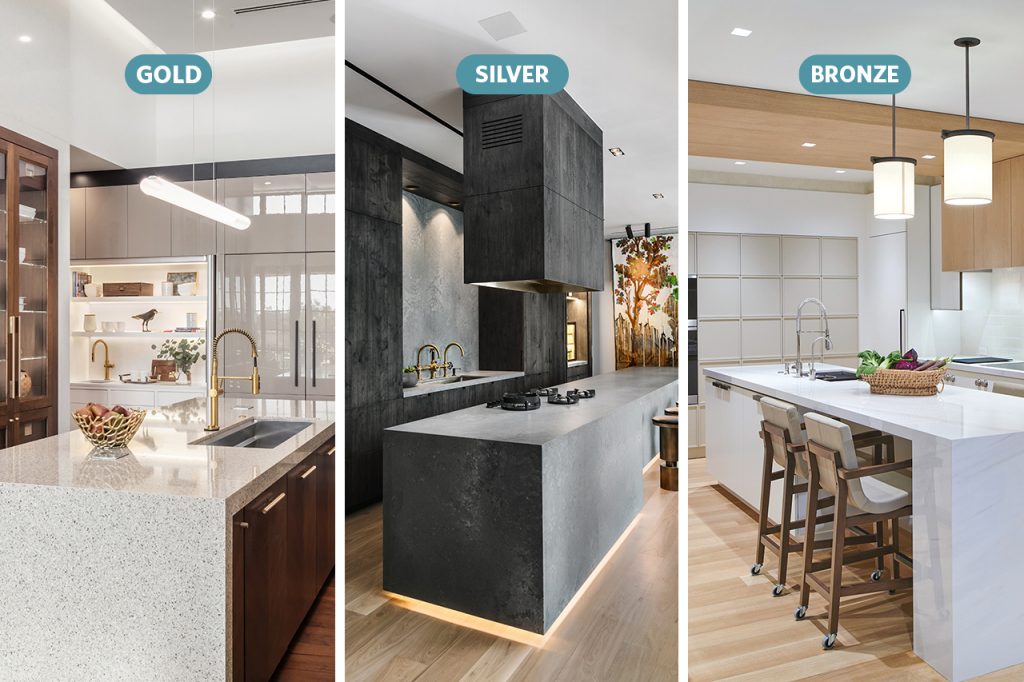
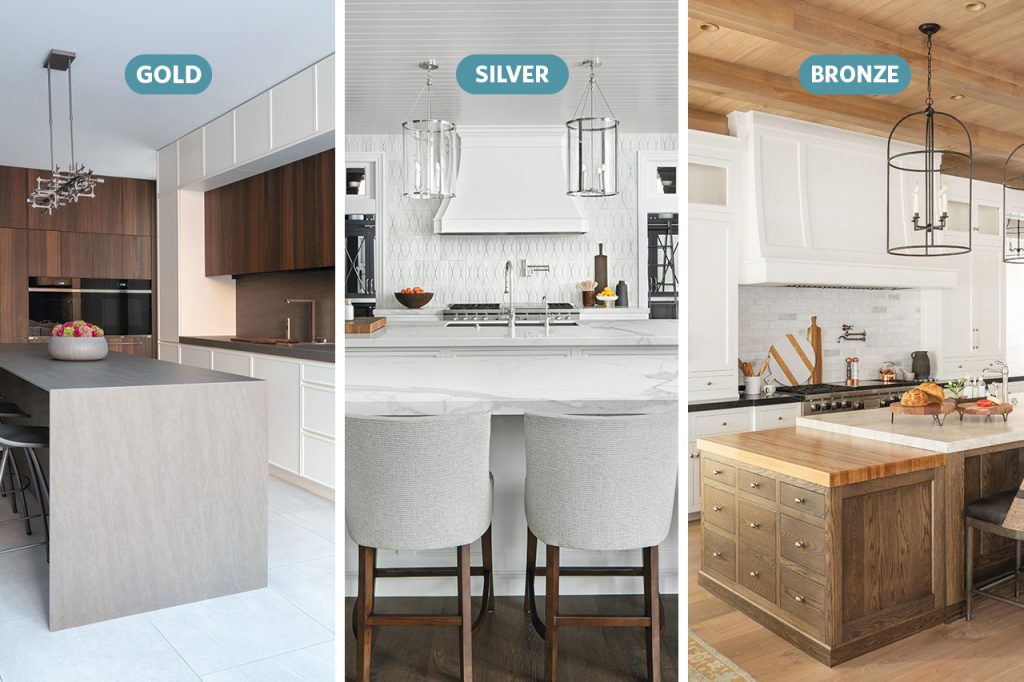
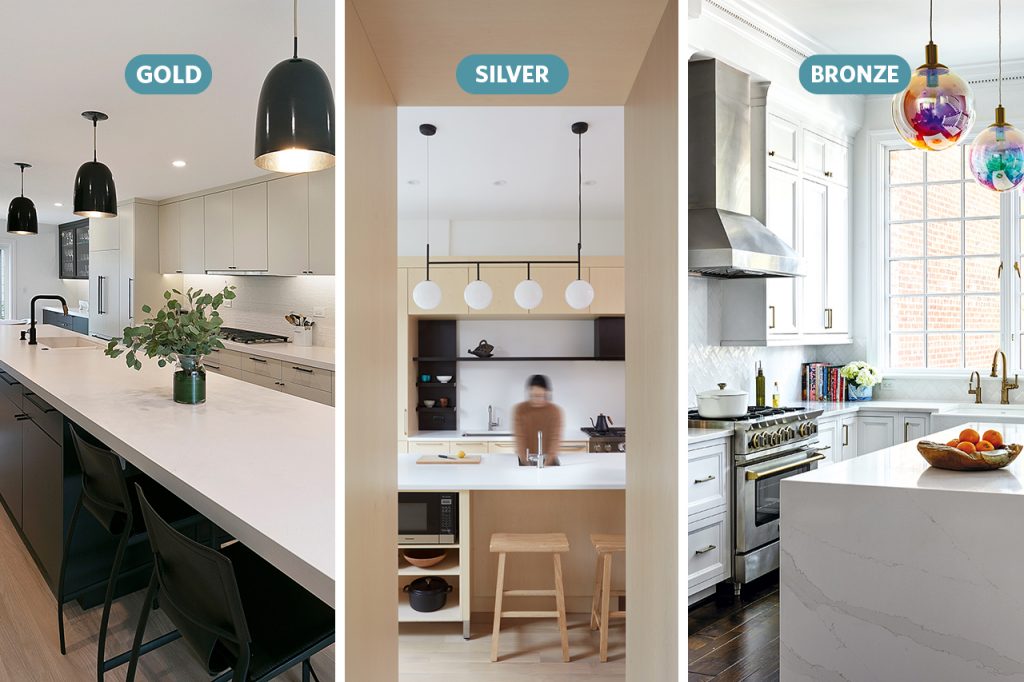
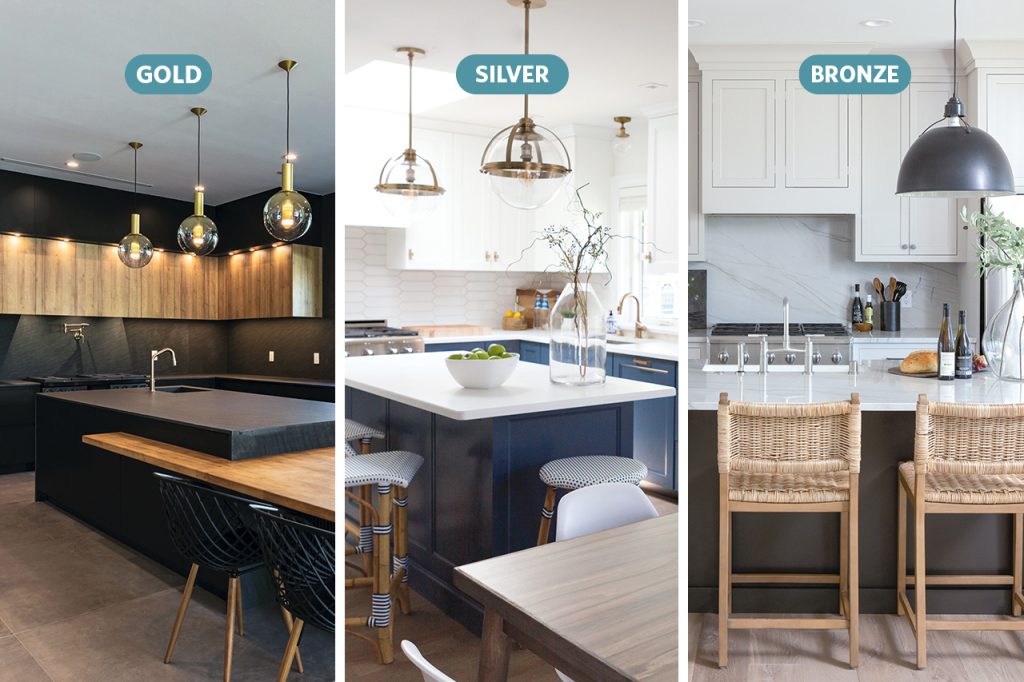
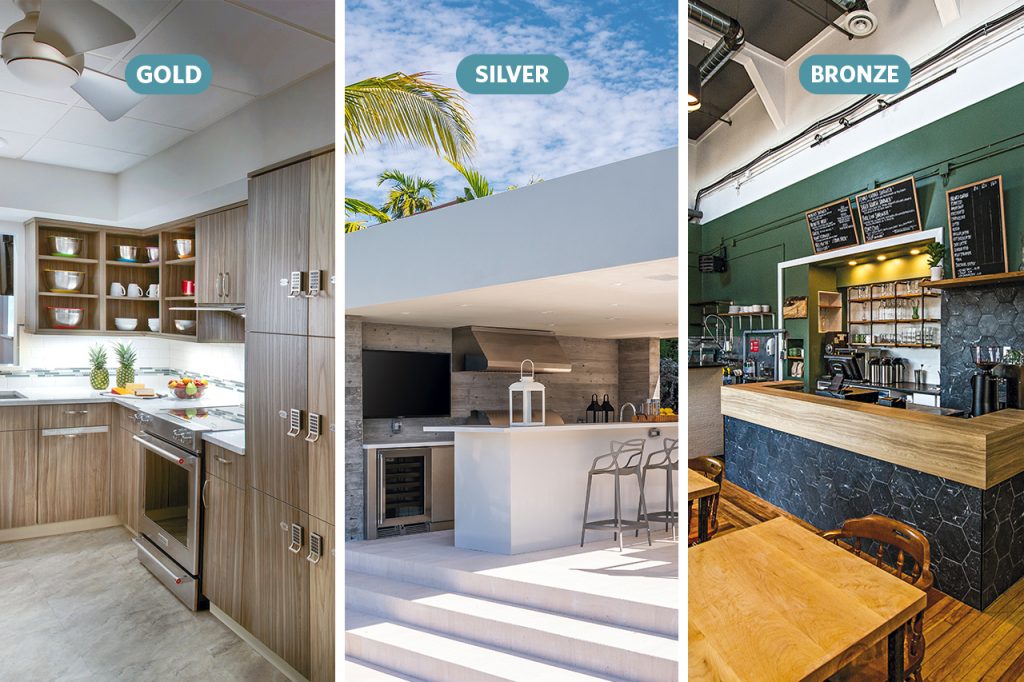
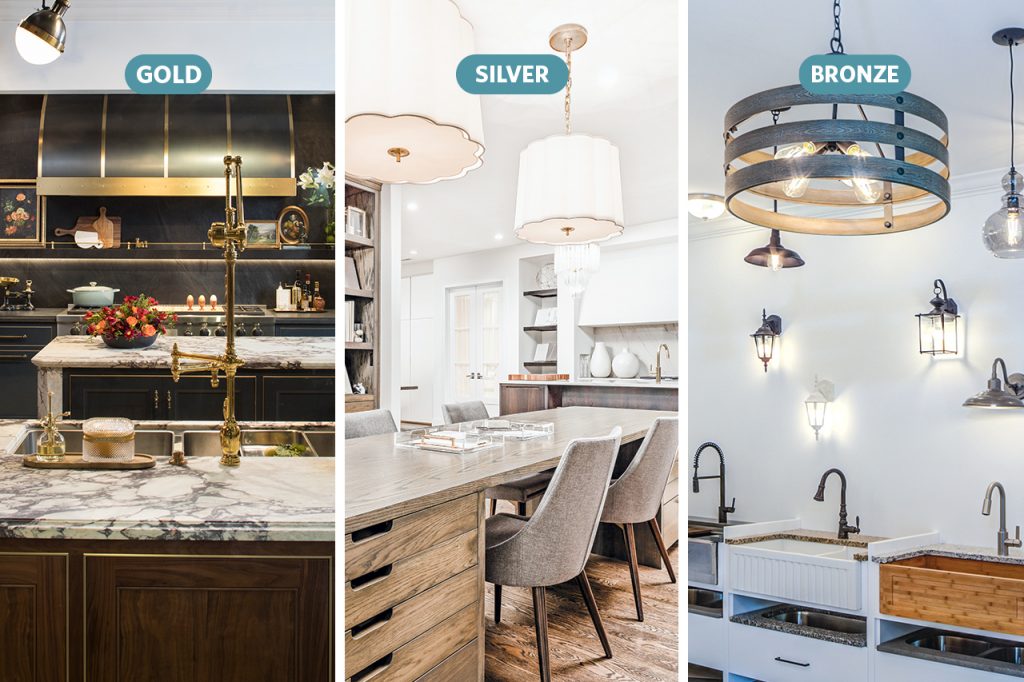
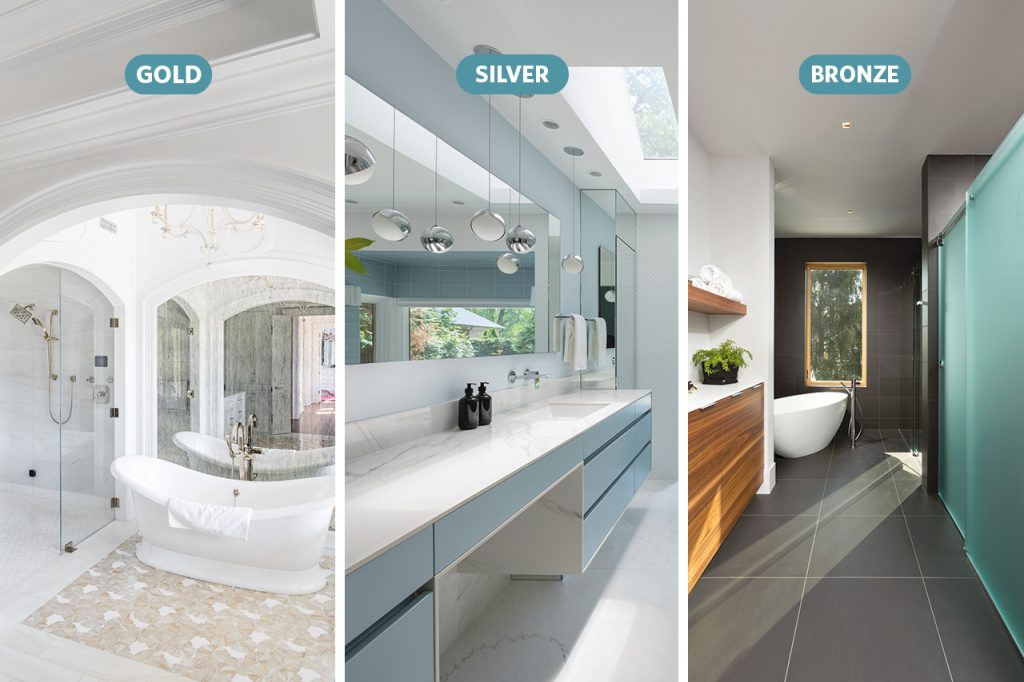
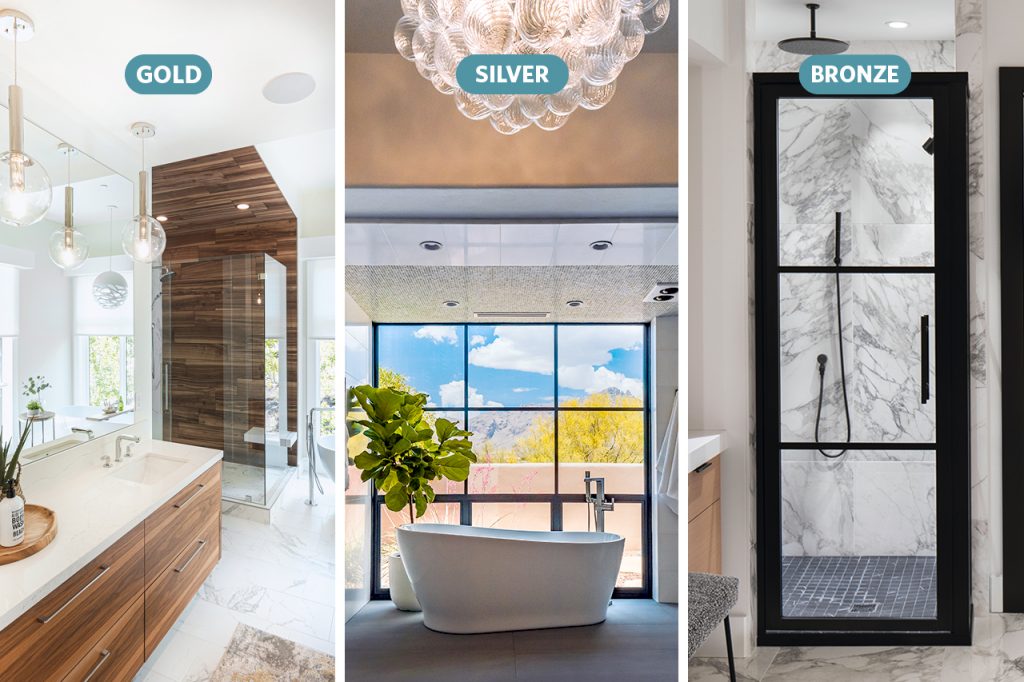
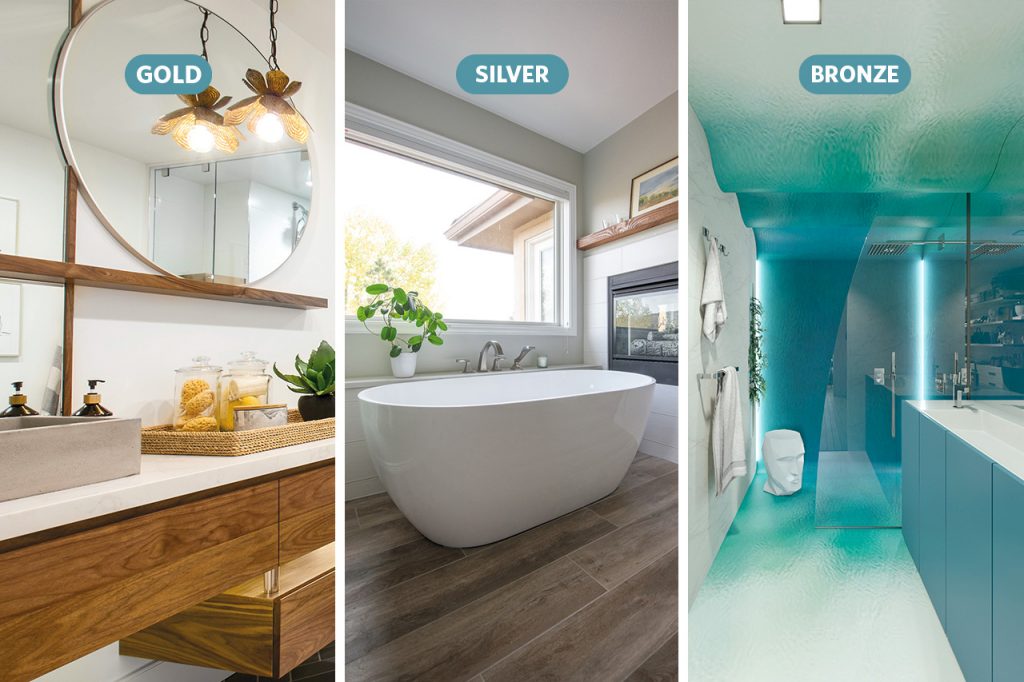
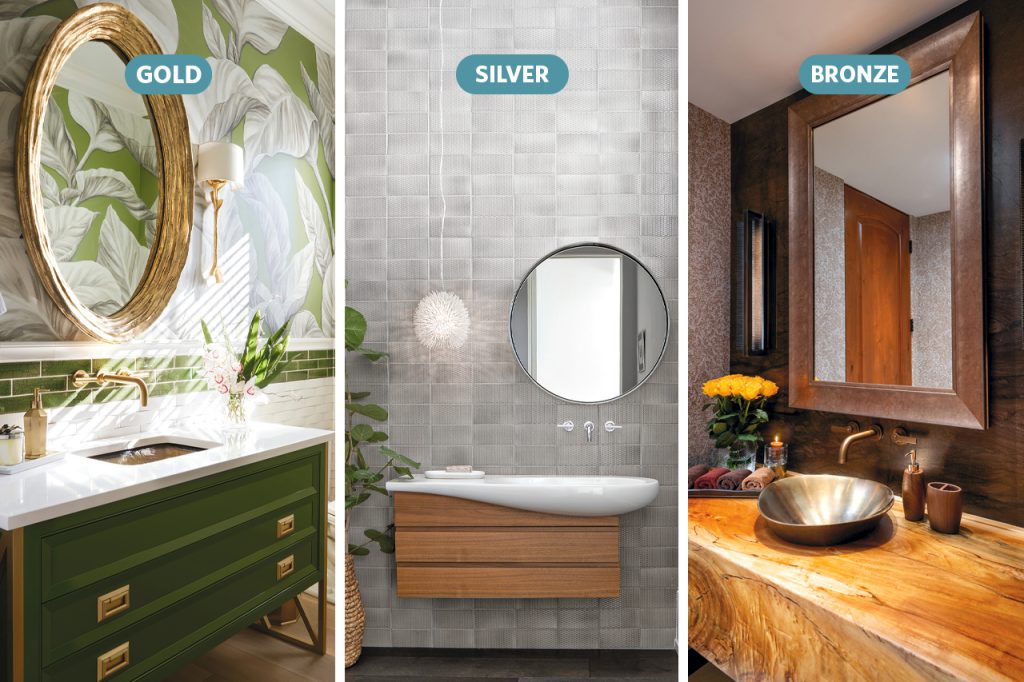
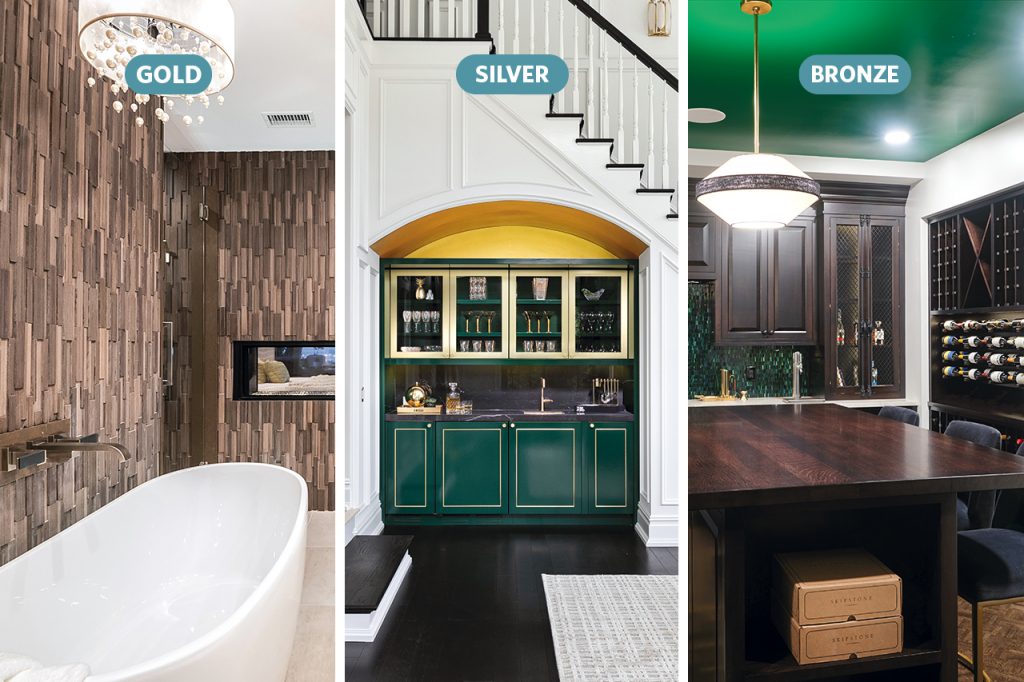
The post 2021 Best Kitchens $150,000–$225,000 appeared first on Kitchen & Bath Design News.
SEN to Host Design Sales Educational Program
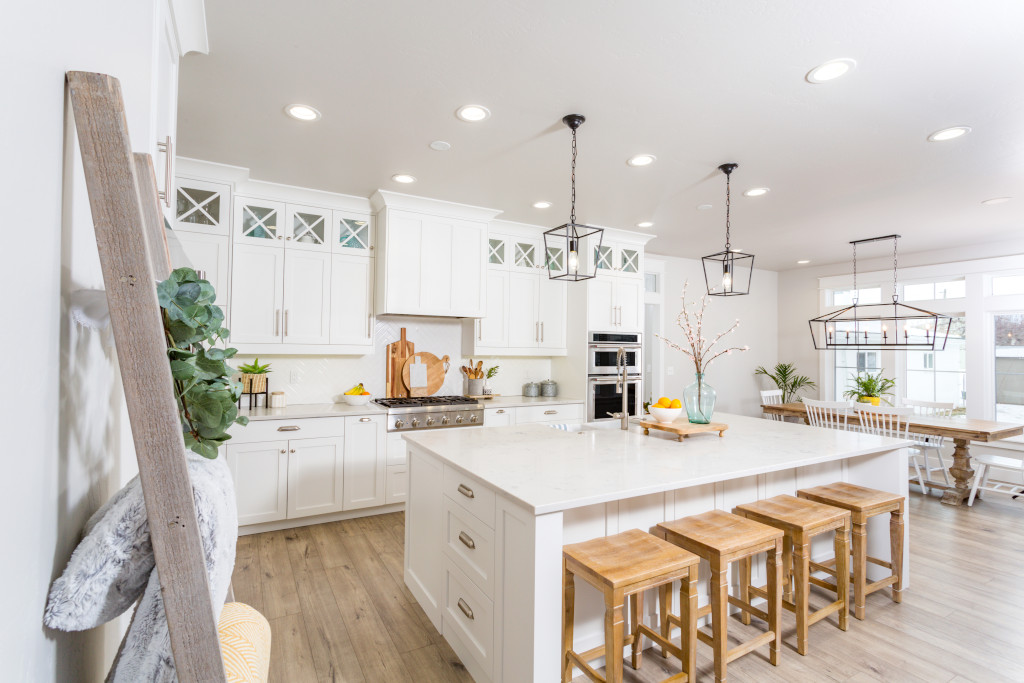
Chicago, IL – SEN Design Group invites kitchen and bath designers and sales professionals to the Good-Better-Best Sales School, scheduled for September 8-9 at theMART in Chicago, IL. The GBB Sales School, sponsored by Custom Wood Products, Inc, Bridgewood Cabinetry and Exclusive Cabinet Agents LLC, will be conducted by SEN Design Group’s Senior Vice President, Dan Luck, an industry expert with over 43 years of experience.
The two-day program will deliver advanced training in the successful sales strategies that will help designers and sales professionals increase their gross profit margins by up to 40%. Participants will become proficient in the science of consumer decision-making, effectively drive the sale conversion and understand why the Good-Better-Best (GBB) selling system is so effective, according to SEN Design Group.
“As a cabinet rep wanting our dealers to maximize their sales and profitability, we are thrilled to be a partner in bringing this first class, impactful sales training program to the kitchen and bath industry,” says Vince Hodshire, principal of Exclusive Cabinet Agents, LLC.
“The GBB selling system leverages the prospect’s emotional engagement with the remodeling project,” says Luck. “Consumers like choice, but not too many choices. GBB pricing tiers remove the ‘to buy or not to buy’ step from the decision-making process.” Instead, it guides prospects through a pricing structure that offers a sense of empowerment. When consumers are presented with three options to choose from, most of them will select the middle option, which represents increased revenues.
“We at SEN Design Group seek to help businesses convert more sales and earn higher revenues,” adds Luck. “The GBB sales process has been proven to significantly increase gross profit margins, and this two-day program will give designers the most effective tools to achieve speedy closings.”
The regular tuition fee is $1,695 for this intensive two-day sales training program. Dealers who are part of a sponsor’s network can save $500, using a promotional code to register for $1,195. SEN members who have the SEN U annual education subscription as part of their membership can attend for under $300.
For additional information about the program and about membership, visit https://sendesigngroup.com.
The post SEN to Host Design Sales Educational Program appeared first on Kitchen & Bath Design News.
Did you miss our previous article…
https://www.conduithardware.com/?p=331
Registration for KBIS Now Open
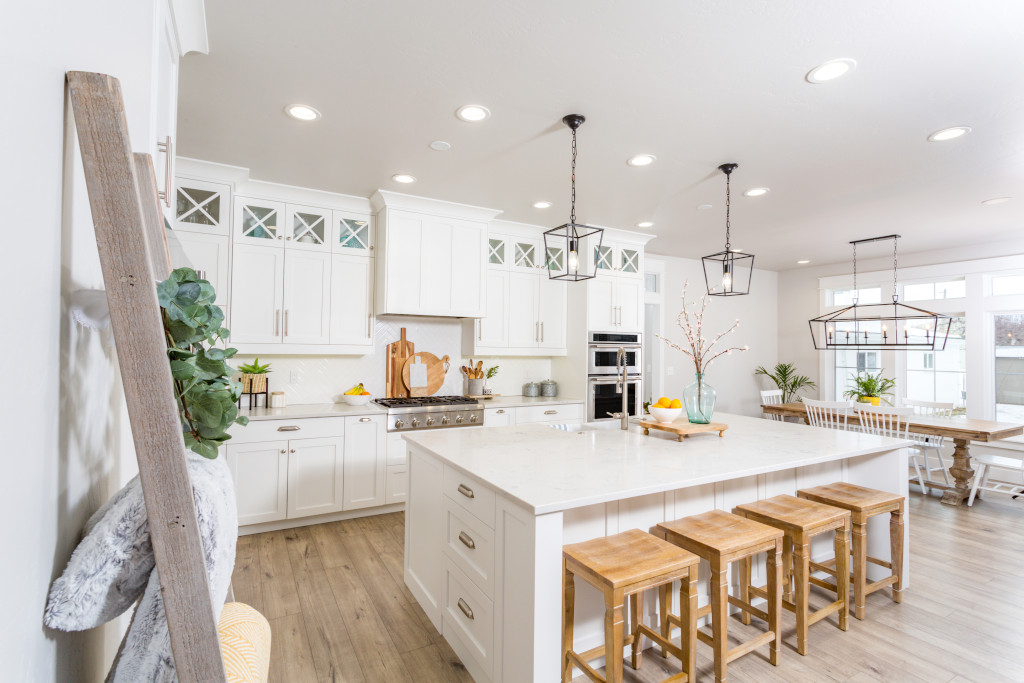
HACKETTSTOWN, NJ — The National Kitchen & Bath Association (NKBA) has opened registration for the 2022 Kitchen & Bath Industry Show (KBIS): Where the Future is Defined. The annual event, owned by the NKBA and produced by Emerald Expositions, is the largest North American trade expo and networking opportunity for kitchen and bath industry professionals.
Building on the success of a nine-year partnership with the National Association of Home Builders (NAHB) International Builders’ Show (IBS) to create Design & Construction Week® (DCW), KBIS and IBS will co-locate at the Orange County Convention Center in Orlando, FL, from Feb. 8 -10, 2022. The two shows are expected to feature over 800,000 net square feet of exhibit space and showcase more than 1,000 design and construction brands.
Sign up for KBIS here; NKBA members register for free during the month of September.
The NKBA and Emerald Expositions are committed to creating an event experience where customers, partners and employees can safely and effectively conduct business in person, the agencies not. As a result, the CDC COVID-19 health and safety measures and protocols will be followed. A detailed list of precautionary measures being implemented for KBIS 2022 can be found in the KBIS Health & Safety Plan here.
In addition, the host site of KBIS 2022, the OCCC was one of the first facilities in the country to receive the Global Biorisk Advisory Council (GBAC) Star accreditation on outbreak prevention, response and recovery. Since receiving this distinction, the OCCC has instituted the industry’s highest standards for cleaning and disinfecting, it was noted.
The KBIS 2022 expo will include over 380,500 NSF and feature an expected 450 exhibitors, including legacy brands like GE Appliances, Kohler and SKS. Additionally, more than 40 new exhibitors such as Lefroy Brooks and CopperSmith will occupy nearly 20,000 NSF. More than 85 global brands from Germany, Italy, Turkey, Spain, Taiwan, China, Mexico and Poland will also be present.
“We are very much looking forward to getting the industry back together at the start of the new year,” said Suzie Williford, NKBA exec. v.p. & CSO. “KBIS is not only a place for old friends and colleagues to have the chance to catch up, but also a chance for new faces to become part of this talented and inclusive community.”
“We’ve had such a great turnout in Orlando in past years and are excited to host this much-anticipated event in person again,” said Jason McGraw, CAE, CTS, group v.p., KBIS and CEDIA Expo, Emerald. “KBIS 2022 is slated to be one of the most impactful events of the industry, filled with the latest innovative products and programming. We strongly recommend attendees register early to take advantage of discounted registration and hotel rates.”
September: registration is free for NKBA members, $50 for non-members;
Oct. 1- Dec. 10: Early Bird Rates — $50 for NKBA members, $100 for non-members;
Dec. 11-Feb. 7: Advance Rates — $100 for NKBA members, $175 for non-members;
Feb. 8-10: Onsite Rates — $150 for NKBA members, $225 for non-members.
Expo and 3-day VFTI pass (access to all sessions plus on-demand program): $350 for NKBA members, $525 for non-members.
The post Registration for KBIS Now Open appeared first on Kitchen & Bath Design News.
Did you miss our previous article…
https://www.conduithardware.com/?p=328
Textures in Tile
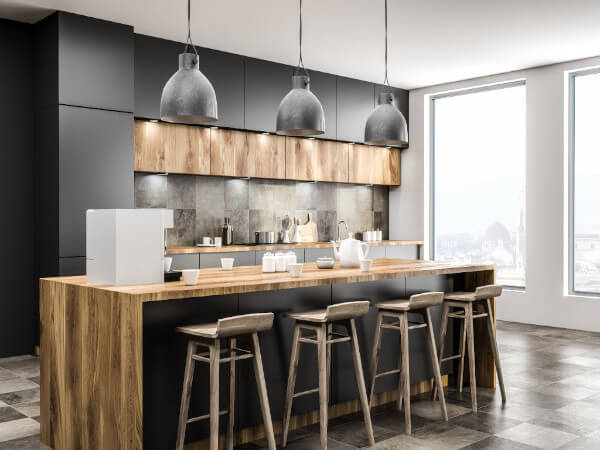
While cabinets, counters, fixtures and appliances often anchor a kitchen or bath, it’s the secondary items like tile and hardware that can add the true decorative flair. Tile can carry a neutral design and add calm to the space, or provide bold color and rugged texture to deliver the wow factor.
Stone, glass, porcelain and ceramic are among the myriad elements that can be used to create tile, and all add their own look and feel to a space. Whether the desire is for a nature-inspired look or a glossy, modern appeal, tile can provide just the right accent.
–Subway tile continues to trend, but the classic look is getting an update with an array of colors and smooth texture that looks handmade.
–Shapes go beyond squares and rectangles, encompassing everything from hexagons to triangles to arabesques to chevrons.
–Three-dimensional tiles continue to garner attention, delivering surfaces that feature irregular patterns and an organic look and feel.
–Cement tiles with painted patterns add drama to backsplashes and showers alike, providing a bold addition to overall designs.
–Pastels and neutrals yield a softer hue, while saturated jewel tones and earth-inspired shades add an organic touch to spaces.
–Matte tile surfaces and textures are currently garnering major attention, complementing weathered woods, raw and patinaed metals and matte finishes on faucets, appliances and hardware.
The post Textures in Tile appeared first on Kitchen & Bath Design News.
Kitchen Magic Expands Services to Other Rooms
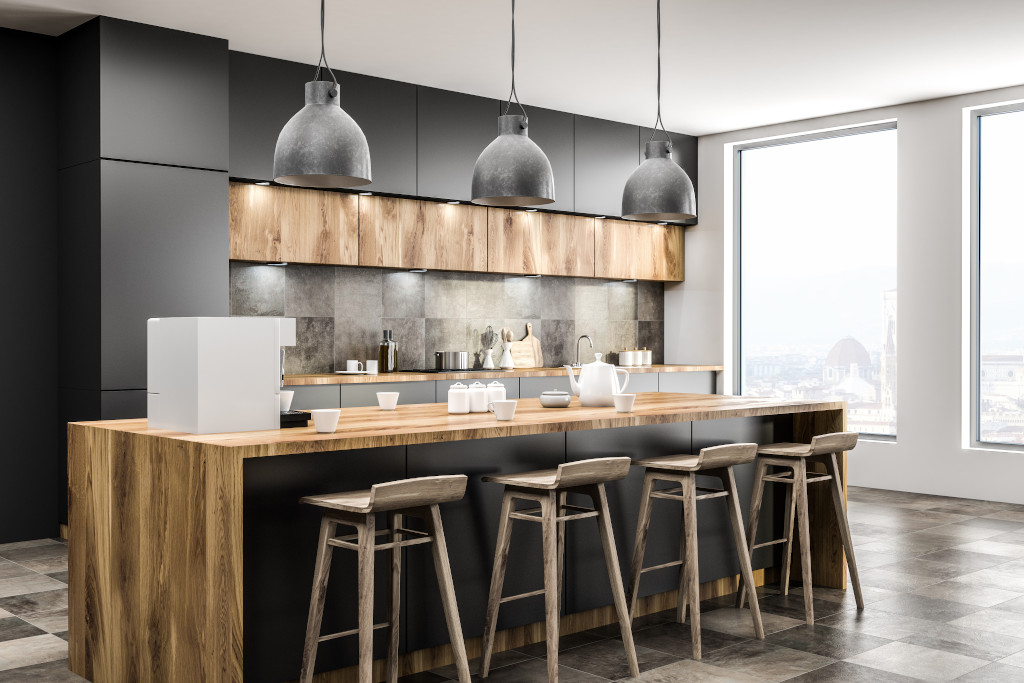
NAZARETH, PA — Kitchen Magic, the Nazareth, PA-based kitchen remodeling/refacing company, has expanded its remodeling services to tackle additional rooms in the home, the company announced.
The company’s expanded efforts include solutions for laundry rooms, pantries and storage solutions throughout the home, Kitchen Magic said. To complement this initiative, the company has launched a new line of affordable cabinetry named Barwen. Homeowners will also have access to custom cabinet upgrades, according to Kitchen Magic, which serves Connecticut, Massachusetts, New Jersey, Pennsylvania and Rhode Island.
“The initiative to apply 40+ years of innovation and experience to rooms beyond the kitchen was put into motion as the COVID-19 pandemic lockdowns uncovered emerging client needs aimed at making homes more efficient in the work-from-home era,” said Kitchen Magic President Brett Bacho. “We jumped at the opportunity to create solutions that streamline and declutter the home … as well as introduce Kitchen Magic to a wider group of homeowners seeking remodeling.”
The post Kitchen Magic Expands Services to Other Rooms appeared first on Kitchen & Bath Design News.
Did you miss our previous article…
https://www.conduithardware.com/?p=322
Doing White Right
When designers hear their clients utter the request, “I want a white kitchen,” it can be met with dread or excitement…or a mix of both. Regardless, whether designers love them or hate them, white kitchens continue to be immensely popular with homeowners.
Often defined and characterized by their foundation of white cabinetry, a white kitchen’s impartial palette gives it a go-with-anything neutrality that can serve as a backdrop for the introduction of color and personality via other design elements. However, when combined with an abundance of white elements, especially countertops and backsplashes, white kitchens can turn into a monochromatic sea of sameness.
This month, KBDN asked designers to share projects and design tips that take white kitchens to a new level.
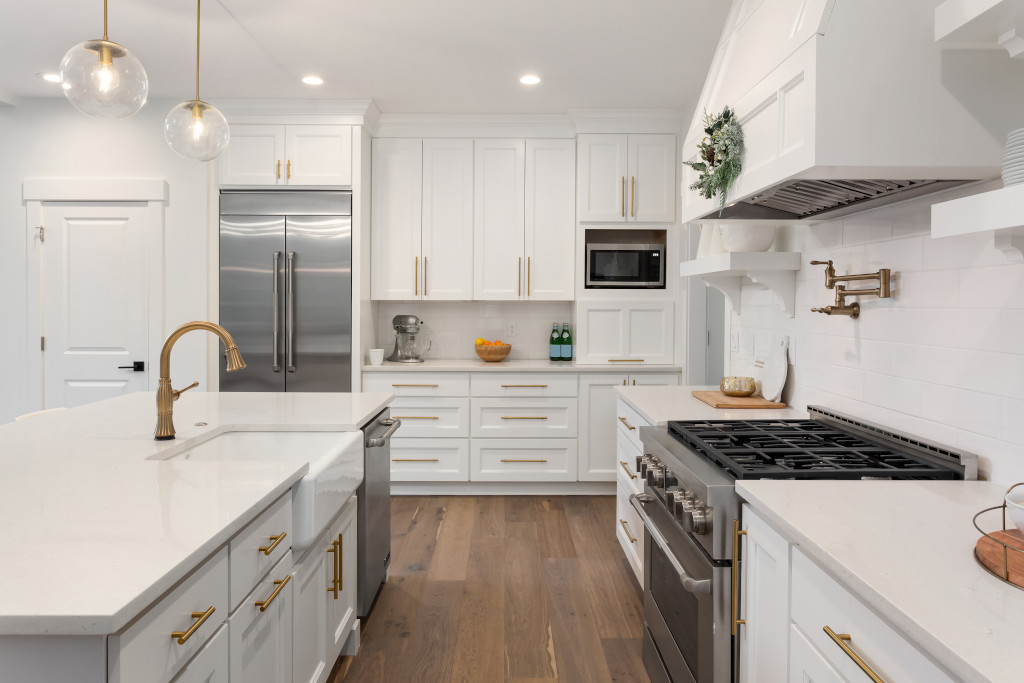
Jena Bula collaborated with Ekren Construction to include white cabinetry as a base that is complemented with dark gray quartzite countertops and a lighter warm gray porcelain tile backsplash for dimension.
Jena Bula, principal designer
Delphinium Design; Charlotte, NC
When discussing white kitchens, Jena Bula’s clients still often ask for white cabinetry.
“They want an aesthetic that is lighter and brighter with an airy feel,” she says. “While there are different ways to achieve that, people often associate it with white.”
However, she has noticed a bit of a shift in what exactly that means and what else is included.
For starters, white doesn’t always mean bright white.
“There are so many different ways to do white,” she says. “It can mean bright white, but it can also mean a warm white or a country white depending on the space, the aesthetic and what other colors are included.”
Plus, clients also seem more open about bringing in other colors.
“There was a time when white kitchens were a lot of
white-on-white-on-white,” she indicates. “But now, they seem to have a little more dimension. People are mixing in different colors and warmer materials. White kitchens aren’t always all white cabinetry, white countertops and white islands.”
Such was the case for a recent kitchen remodel completed in collaboration with Ekren Construction. White shaker cabinets serve as the base, but Bula brought in dark gray quartzite countertops and a lighter warm gray porcelain tile backsplash for added dimension.
“She didn’t want a white-on-white kitchen,” says the designer. “Countertops are an important element in the space. My client needed something durable because she cooks a lot for her family, so the dark quartzite was a great choice for functionality. It also has some texture from its honed and leathered finish, which gives it dimension. It’s a really special element, and in person you can really see that texture.”
Flooring is another way that Bula freshens up today’s white kitchens. Often, she chooses to use warmer toned hardwood for balance. Lighting and plumbing fixtures as well as hardware can also add diversity.
“We used dark hardware in this kitchen, which gives it great balance so everything isn’t all light and bright,” she says. “Fixtures, such as a really cool faucet or fun pendants, and hardware are also a great way to add personality.”
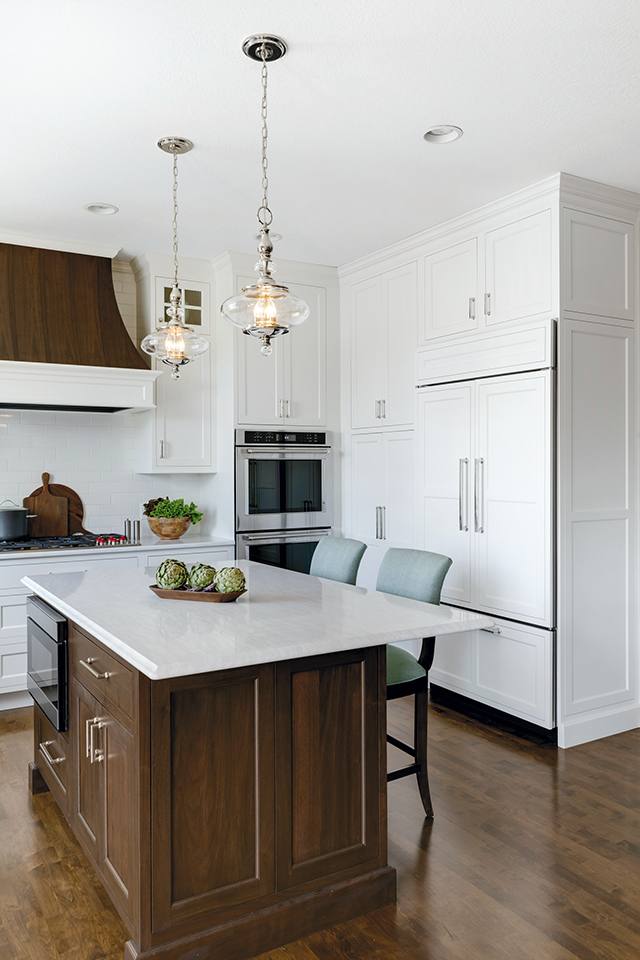
Crystal Kitchen and Bath Design Build – 2506 Tournament Players Cir S, Blaine, MN 55449
Mary Maney, CKBD, ASID, CLIPP
Crystal Kitchens + Bath; Crystal, MN
As a designer with a remodeling company, Mary Maney sees a lot of outdated kitchens, especially those from the 1980s with their distinctive abundance of oak…including oak cabinetry, oak flooring and oak trim.
“People want to tone that down so everything isn’t the same,” she says. “They also want to get rid of the busyness of oak, which, in those dated kitchens, usually has a lot of grain. Often, they do that by keeping the oak floor, and sometimes the oak trim, but they replace the oak cabinetry with white cabinetry. White doesn’t necessarily designate a decade or date a kitchen as much as wood like oak, maple or cherry. White is also popular because it allows everything else – such as a countertop, backsplash, flooring and island – to stand out.”
White inset cabinetry serves as the ‘quiet’ backdrop for one recent kitchen remodel where Maney’s client wanted a ‘statement’ ventilation hood that would serve as the focal point for the room. Reconfiguring the space, the designer eliminated an awkward, angled walk-in pantry to pave the way for the inclusion of a walnut hood that echoes the tones of the dark floor and island base cabinetry. She also tied the kitchen into the adjacent living room by replacing the existing maple bookcases that flank the fireplace with walnut bookcases.
“My client had redone the maple floor a few years previous with a dark stain,” she indicates. “She didn’t want an all-white kitchen, so it seemed logical to include other dark elements. We chose walnut because it allows some grain to show through, which provides texture and isn’t quite as harsh as black. Walnut also gives the kitchen an ‘upscale’ look that she wanted.”
A quartz countertop with a subtle gray veining pattern with ‘movement’ and a backsplash that features a light crackle finish reinforce the white theme while offering variety.
“You don’t want elements of the same color to all have the same tone,” she says. “When that happens, there’s nothing to define the different planes. It’s important to have some contrast.”
Adding paned glass doors to select perimeter wall cabinets also adds interest and makes this space feel special.
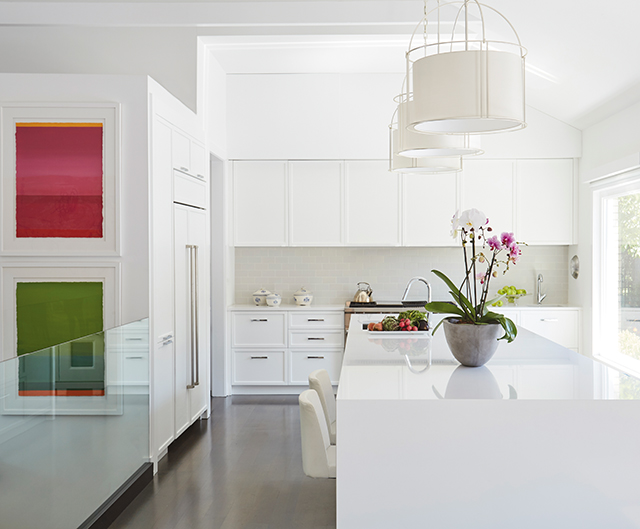
In this kitchen Scott Dresner celebrates timelessness and diversity by combining white perimeter cabinetry, white paneled refrigerator and white quartz countertops with gray cerused oak island cabinetry ‘framed’ in a waterfall of white quartz.
Photos: Jim Tschetter
Scott Dresner
Dresner Design; Chicago, IL
Scott Dresner credits, in part, his love of white kitchens to growing up in a modern home with a white kitchen in Detroit, MI. Now, he incorporates that love of white into his kitchen design business.
“I’m pro-white kitchens,” he stresses. “The white kitchen – and stainless – is my favorite. White kitchens definitely are not dead.”
Part of that affection is due to its classic design appeal.
“A white kitchen will stand the test of time,” he says. “There are still mill shops making the same [cabinet] door they made in the ‘80s. A white kitchen is like Jackie Onassis and Marilyn Monroe…beautiful and timeless.”
Dresner also appreciates the hue’s diversity.
“There’s super modern bright white, warm white, cream white, off white…” he says, referencing a variety of white kitchens posted on his website. Some showcase multiple white elements, including one recent renovation that includes sleek, smooth, bright white back-painted glass cabinetry and a white quartzite countertop with a waterfall edge. Silver trim border details on the cabinets tie them to the countertop’s gray veining pattern, floor and stainless steel appliances. Conversely, another white kitchen features more traditional paneled cabinetry painted in a creamier white, similar to the color of a cameo, which he contrasted with a brighter white coffered ceiling to create separation. Dresner also included a natural stone white/gray veined countertop and matching accent wall and stainless steel appliances.
“I often use stainless steel appliances in white kitchens,” he says. “The combination is like peanut butter and jelly.”
While variations of white with stainless steel dominate some designs, others highlight a mix of materials, including one kitchen that combines white perimeter cabinetry, white paneled refrigerator and white quartz countertops with gray cerused oak island cabinetry ‘framed’ in a waterfall of white quartz. Dark wenge drawer interiors, visible when exposed, provide dramatic contrast.
“It certainly feels like a white kitchen, and everyone considers it a white kitchen,” he says.
This time, the designer blended the cabinetry with the wall color and ceiling beams to create a seamless visual.
“I wanted the cabinetry to essentially go away, to blend into the wall so the huge picture windows ‘speak’,” he says. “There is a lot of white in this kitchen, but it isn’t a sterile space. There are parts of ‘sterileness,’ such as the countertop that is white and shiny. But the rest of the whites have a matte finish so that, overall, there is a Zen, quiet feel to the space. People love this kitchen.”
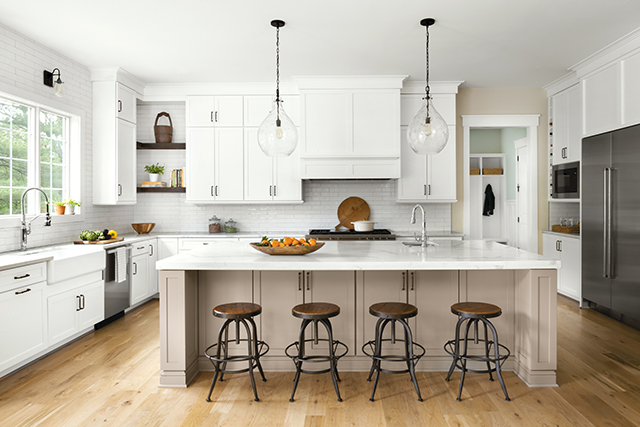
Christina Simon and senior designer Brittany Gunst joined forces in this kitchen to create a modern farmhouse vibe with timeless elements, plenty of storage and an open concept…all with a foundation of white cabinetry, white countertops and a white backsplash. The reclaimed wood shelves serve as a statement piece and the taupe/gray painted island complements the veining pattern in the countertops.
Photo/Styling: Stylish Productions; Charlotte Safavi and Robert Radifera
Christina Simon, CKBD, ASID, president
c|s Design Studio; Clifton, VA
Christina Simon works in a relatively traditional part of the country – the Washington DC suburbs – where she often fields requests for white kitchens.
“People here simply love them, and we’re happy to oblige,” she says. “White is timeless, clean and bright…all things people want for their kitchens. White is also neutral and plays well with others, making it easy to coordinate with appliances and hardwood floors, which is a big element for us.”
These days, the white kitchens she designs often include updates via natural and rustic elements as a complement.
“We introduce texture and contrast into the space to make it more interesting,” she explains.
As an example, she and senior designer Brittany Gunst recently joined forces on a remodel where the clients wanted their new kitchen to have a modern farmhouse vibe with timeless elements, plenty of storage and an open concept…all with a foundation of white cabinetry, white countertops and a white backsplash, as well as a white farmhouse sink, which is another popular choice for her clients.
“When there is a lot of white, it’s important to bring in some statement pieces,” she notes. “In the case of this kitchen, the statement piece is some reclaimed wood corner shelves.”
Additionally, Simon indicates that black accents can add contrast, so she brought in black cabinetry hardware and lighting. In another recent remodel, she made a striking statement with a black ventilation hood.
To provide differentiation amongst white elements, Simon utilizes a variety of sheens throughout a space, such as in this kitchen where the matte finish of the cabinetry plays against the glossy sheen of the elongated 3″x12″ subway tile backsplash.
“This client wanted a simple subway tile backsplash,” she reports, “but its glossy sheen sets it apart from the other white elements. We also like to use handmade tile, which can have different glazing or it may be a slightly different white, such as an off white. We’re seeing a lot of people using a variety of different whites in their kitchens.”
When using white as a countertop, Simon likes to include materials with some veining, such as a marble or marble-look quartz.
“Instead of plain white, we like to use something with a light veining pattern against a white background, because those veins allow us to pull in other colors,” she explains, citing the marble-look quartz in this kitchen that gave them the opportunity to incorporate a taupe/gray painted island.

In this remodel, Nicole Zeigler contrasted the white cabinetry and white backsplash tile with a custom edge-grain walnut bar top on the island and walnut floating shelves that coordinate with floor, as well as a custom hot-rolled steel ventilation hood.
Photo: Lucy Call
Nicole Zeigler, NCIDQ
enzy design; Salt Lake City, UT
With a trend towards design that integrates a furniture-style appeal, Nicole Zeigler sees many of her white kitchens offering an assortment of materials beyond just white.
“White kitchens are definitely still popular,” she says. “They never go out of style. They have always been around, and they will continue to be around. But I am seeing more mixed materials rather than straight white. I think that’s because, overall, there’s a trend in kitchen design that incorporates furniture-look pieces, rather than all of the same cabinets. For example, you might see an island with a wood finish and a furniture-style base, or something unique.”
Zeigler sees that updated look as offering a way to add personality and warmth to the space. In particular, wood – or even wood-look vinyl – floors are popular. The designer also adds personality via ventilation hoods or accent cabinets and hardware, which she dubs as the ‘jewelry.’ She also indicates there is still a trend for open floating shelves in a material or finish that offers a contrast to white.
Several of those elements were included in a recent renovation, where gloss white wall cabinets are combined with natural rift-cut oak base cabinets. The hood and the cabinets around it feature a charcoal finish.
“It’s stunning,” she says. “I feel like it’s still a white kitchen, but it’s not an in-your-face-white kitchen because of the other elements we’ve added to it.”
In another kitchen, where she collaborated with cabinet maker/installer Paramount Cabinet and builder Spiro Brothers Construction, wall and base cabinets are white, as is the island cabinetry and the backsplash, which is comprised of elongated hexagon-shaped subway tile. The tile’s glossy finish adds reflectivity while its geometric shape adds interest, without making it busy. However, to mix it up, she included a custom edge-grain walnut bar top on the island that coordinates with the floor and a few floating shelves that frame the window to make it feel more open.
“The wood bar top and shelves bring natural elements into the room and add some contrast,” she says. “They also bring up some of the darkness from the floor to create more balance, without overwhelming the light space.”
Another ‘dark’ element is the custom hot-rolled ventilation hood.
“It’s a really simple box shape,” she says. “But it has a beautiful finish that offers natural depth and subtle marbling. It’s gorgeous against the white backdrop.”
Quartz countertops that mimic honed concrete and slightly oversized pendants that offer the feel and look of linen also prevent the white space from being too sterile.
“Having those elements – the backsplash, the shades, the bar top, the ventilation hood and the countertops – are all important to make this white kitchen more inviting and less institutional,” she says, “especially since it has white slab cabinetry.”
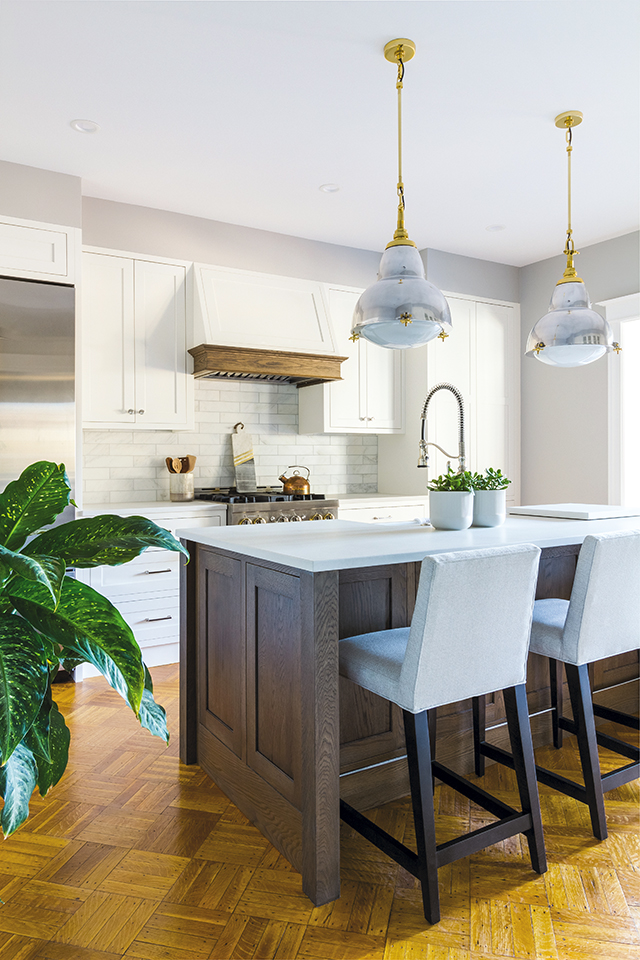
Tamra Pumpelly often uses white cabinetry’s door style and construction to set the tone in a space. In this kitchen, inset cabinetry was appropriate given the historic value of the home. She included a flat-cut white oak island, stained in Driftwood, to add warmth and depth. Incorporating it as an accent on the ventilation hood brings up the eye and ties the perimeter and island together.
Photo: Steve Hershberger
Tamra Pumpelly, operations manager
District Cabinets; Washington DC
Even though Tamra Pumpelly indicates that white kitchens can be a ‘safe’ choice for her clients, that doesn’t mean they can’t be special and beautiful.
“White cabinets can become a backdrop of a kitchen, rather than them being the focal point,” she explains. “Quality cabinetry is expensive, and I think homeowners see it as an investment they want to get right. Elements like hardware and lighting are easier to change out.”
As the foundation, those same white cabinets can also set the tone with their door style and construction.
“An inset or mission door style sets a completely different tone than a slab door,” she says. “The sheen factor also changes a kitchen. A rich matte finish represents a completely different style than a gloss finish.”
As an example, in one recent kitchen remodel, the designer collaborated with Build by Four Brothers to incorporate white inset Elmwood cabinets into their clients’ new kitchen.
“Inset cabinetry was appropriate for this kitchen because of the historic value of the house,” she says. “Clients often are concerned with losing storage with inset, but it immediately elevates a kitchen without looking fussy.”
The team also included a flat-cut white oak island, stained in Driftwood, to add warmth and depth. Incorporating it as an accent on the ventilation hood brings up the eye and ties the perimeter and island together.
The white cabinetry also complements the existing hardwood floor.
“Maintaining the floor was important to the client, so we didn’t want to take away from it,” she says. “The white cabinetry allows the floor to be the focal point and we built the kitchen around it.”
In addition, with a neutral foundation of white cabinetry, Pumpelly sometimes brings color or a wood element to an island to ground it while adding warmth and personality.
“Pops of color can also be used in the lighting, and we love mixing metals and textures in white kitchens,” she adds.
In addition, white cabinetry allows countertops and backsplashes to be the stars of the show in a traditional white kitchen, such as in a recent renovation where white cabinetry and white backsplash tile give the dark gray countertop and gray/white chevron backsplash insert the opportunity to stand out. 
The post Doing White Right appeared first on Kitchen & Bath Design News.
Did you miss our previous article…
https://www.conduithardware.com/?p=313
Connected Serenity
The desire to create a spa-like environment in the bathroom, a place to rest and rejuvenate, has long impacted trends in shower systems. With multiple users in the home, flexible, innovative products that allow each person to tailor the experience as needed are in high demand.
“At Duravit, it is essential that our product offerings, integrated technology and design sensibility aid designers and homeowners in creating and enjoying a bathroom space that is relaxing, rejuvenating and offers benefits to achieve a healthy lifestyle,” says Tim Schroeder, president of Duravit North America in Duluth, GA.
Patrick Weidl, director, business development at ThermaSol in Round Rock, TX offers, “Homeowners understand the importance of self-care, and more and more they want to incorporate steam showers and all the attending attributes…chromatherapy, aromatherapy and yes, even technology.” From a design standpoint, he adds, “Less is still more. Minimal design in showers remains a strong trend.”
“People want more than ever to be able to relax and enjoy their time in the shower,” states Jayson Auger, product designer at Kalia, based in Sainte-Marie, Québec, Canada. “They want to be able to activate multiple accessories at the same time, up to two or three items, such as the rain head, hand shower or tub spout,” he adds.
Technological advancements also have an impact on shower space. “Consumers continue to be excited about the convenience offered by smart technology and voice-activated products, and the bathroom is no exception,” stresses Lindsey Jovanovic, director, marketing – bath for Moen, based in North Olmsted, OH.
Other top shower system and enclosure trends include attention to sustainability, convenience and flexibility, and continued interest in both matte black finishes and a natural look. That’s according to manufacturers recently surveyed by Kitchen & Bath Design News.
Personal Refuge
Customizing the shower system allows homeowners to create an individualized restorative space in which to relax and rejuvenate. Flexibility is key in allowing all family members to create their own spa-like experience at home. Features such as music, chromatherapy and variety in spray are all essential to creating these experiences, manufacturers remark.
“Moen understands that consumers are really looking for a personalized experience in the shower and want to feel like their space suits their needs,” Jovanovic says. “The new Nebia by Moen Quattro products offer four distinct showers all in a single showerhead – individually designed to relieve, soothe, clarify and cleanse unlike ever before. Now, everyone in your home can dial in the perfect shower to meet their preferences, while also saving nearly half the water of a traditional showerhead,” she explains.
The features available to customize the showering experience vary widely. Manufacturers say that music is one important feature and having speakers that hold up well is essential.
“Music continues to be among the most popular elements to customize your showering experience; streaming the right playlist or meditation practice into your shower instantly transforms a more utilitarian moment of the day into one that focuses on relaxation and self-care,” stresses Tom Sindelar, performance showering product manager for Kohler Co. in Kohler, WI.
“Just as with our other showering systems, Kohler has developed innovations at various price points to make this experience an attainable one, whether it’s with the Moxie Showerhead + Wireless Speaker, or integrating the amplifier module into the DTV+ system,” he reports.
“Good solid speakers are very much in demand; if you’re going to listen to music or watch a soothing video, you’ll want the best in-shower speakers,” Weidl says.
“Chromatherapy is becoming more and more recognized for its ability to both soothe and/or energize,” he adds.
In addition to features that create a soothing environment, such as music, scent and color, variety in how the water flows is also an important consideration. “The demand for multiple water delivery outlets, such as body sprays, handheld showers and rain heads, continues to grow,” says Sindelar. “We’re also seeing a growth in demand for showerheads and hand showers that deliver multiple functions, empowering the user to transition between full coverage sprays [and] massage settings to customize the experience even further.”
“While it’s important for designers to dial into their clients’ desired experiences, it’s also especially important to address who in the household will be using the shower regularly,” he adds. “For families with young children, solutions like the HydroRail and hand showers can help ensure different users can make the necessary adjustments for an enjoyable experience.”
Sustainable Showers
Manufacturers strive to be environmentally responsible in their practices, and with showers that means finding ways to conserve water, not only to meet legal restrictions in various regions, but also to satisfy consumer demand for sustainable options.
“There has been a shift in the way products are designed from the get-go,” notes Stephanie Dietrich, marketing, Blu Bathworks based in Burnaby, British Columbia, Canada. “The environment and sustainability have been placed in the forefront for most consumers and designers alike, and water conservation is no exception. While places like California are forced to put in place regulations to conserve water, many conscious consumers across North America place importance on purchasing an environmentally focused product regardless of regulation.”
“There continues to be consumers who are looking for more sustainable options in the shower. For those who are interested in an eco-friendlier showerhead, the Nebia by Moen spa showers are a perfect fit,” offers Jovanovic. These showerheads use atomization, the process of breaking up water into tiny droplets, to create the sensation of more water while using nearly half the water of traditional showerheads, she says.
“Duravit has long had a respect for water conservation and environmental awareness – it is a part of our company heritage and applied widely across our product design,” explains Schroeder. “We are a proud WaterSense partner and are always following along with updated regulations.”
Sindelar reports, “Rather than scaling back to one showerhead, designers are instead using it as a moment to educate and show homeowners how digital valves or mechanical diverters enabled for water usage from one outlet at a time can address water conservation without compromising on the ability to customize the experience.”
Auger says that new requirements for hot water regulation also have led to the development of new products, such as a thermostatic pressure balanced shower valve that has a hot water temperature limit of 43°C (109°F), making it suitable for the new senior residences (SR) standards of safety in their territory.
Steam showers are a spa-like feature in the bath that offer therapeutic benefits without using excess water. “The average steam shower uses less water than the average shower, and once everyone learns this they are (a) surprised and (b) relieved,” says Weidl. “On average, a 30-minute steam shower uses just two gallons of water, and that’s considered a long steam. Showers use that amount or more per minute. The average American shower lasts about eight minutes, so water consumption for a traditional shower can surpass 16 gallons.”
Smart Spray
Smart technology has woven its way throughout the home and has made it into shower system controls as well, manufacturers say. Digital controls add convenience and the ability to easily personalize the shower experience.
“As existing technology advances and new technology is developed, we have seen more and more inclusion throughout the household,” Dietrich notes. “The bathroom is no exception. The popularity of digital controls is growing in the market as they offer desirable features such as superior temperature control and flow-rate customization.”
“As smart home controls play a bigger role in how people live and interact with their homes, there’s an increased demand for bringing that same level of control and connectivity to their showers and baths,” Sindelar explains. “Digital showering systems, including our budget-friendly DTV Prompt and more luxurious DTV+ Systems, offer a streamlined, clean aesthetic – eliminating the need for multiple valve trims on the wall.”
Jovanovic remarks, “We’ve seen smart, connected products become more popular in the bathroom, especially products that offer consumers options to customize their experience. When our U by Moen Smart Shower launched in 2017, we were first-to-market with this kind of technology. It provides homeowners with countless ways to create their ideal showering experience – including the ability to set up to 12 personalized presets for everything from shower temperature to the length of your shower, and three choices to control the shower: voice activation, a smartphone app and an in-shower controller.”
Moen has recently expanded U by Moen’s capabilities, she says, to offer even more innovative ways to interact with water. These include enhanced functionality with Amazon Alexa, and compatibility with Apple HomeKit and Google Assistant. “Homeowners can have the shower incorporated into their smart home ecosystem and enjoy the ease and convenience of a totally connected lifestyle,” says Javonovic.
ThermaSol’s steam system is also compatible with Alexa, Weidl reports. “People may think that technology and steam showers are contradictions, but in fact our ThermaTouch controls are completely waterproof, and they allow users to customize their steam shower experience from water temperature, chromatherapy colors, downloadable videos, music, sports channels – whatever it is that makes them feel comfortable,” he adds.
When incorporating technology into shower products, convenience and ease of operation are imperative, manufacturers say. “People are looking for user-friendly products in every aspect of their life,” explains Auger. “Keeping that in mind, customers are starting to look at shower valves with the push-in button for the diverter, to go from one accessory to the other instead of operating a handle. The shower valve is then as easy to ‘control’ as a car dashboard with multiple options for AC/Radio, etc.”
Schroeder says Duravit has seen an increased interest in thermostatic valve technology in the shower space. “Duravit’s Blue Box offers easy installation and is temperature controlled with an anti-scald setting. The shower cartridge comes with trim to avoid damage during construction or installation and can use any of the different trims pending the installation type. The Blue Box has a six-point fixation, allowing for uneven surfaces and adjustable alignment of the handle and plate up to 3.5mm. This type of flexibility in installation and design is what consumers and designers are looking for to create a seamless aesthetic from start to finish,” he remarks.
Individual Style
Finishes, tile patterns and door styles depend heavily on the consumers lifestyle and taste. Manufacturers strive to offer a wide range of options to meet this demand. Still, there are some finishes that stand out, including matte black, brushed gold and natural looks.
“We are seeing a lot of matte black being specified, along with the perennial favorites of polished chrome or nickel,” says Weidl.
“In finishes, matte black is still growing in popularity, and brushed gold is also trending upward,” concurs Kiersten Jung, director of marketing for Basco Shower Enclosures in Mason, OH.
Auger agrees that matte black is a high trend for every bathroom product, including shower doors, faucets and even shower bases. “What we call an ‘Italian shower base’ is also in demand, which is a very shallow base that is nearly as thin as the floor,” he adds. Shower shields, like the company’s Pratika, “are a way to build your own Italian shower, which is very minimalistic,” he remarks.
Dietrich says that, along with matte finishes, “We have seen a design focus on the inclusion of organic materials and finishes. Things like Blu’s solid surface blu•stone, which emulates the look and feel of natural stone, helps to cultivate a native atmosphere in the bathroom setting.”
Products that allow consumers to express their sense of style are essential, but the way the products operate is equally important. “Consumers want beautiful looking fixtures for their homes that won’t sacrifice on function,” Jovanovic stresses.
For door styles, Jung notes, they see trends in heavy glass and frameless enclosures continuing. “Clear glass is the most popular by far, so that homeowners can showcase their entire shower space design and tile,” she offers.
Barn door style rolling doors are also continuing to add a modern flair into the bath space, Jung adds. “When considering layout, a rolling door often allows for a more generous shower space because there is no need to plan for the out-swing requirements of a swing door.”
Auger, on the other hand, says they are seeing a big comeback of framed structures. “For a long time, frameless shower doors have been in high demand. Now, people who are looking to make a statement in their bathroom choose a framed shower door, especially since black is such a big trend. Our Ikonik shower door is a matte black framed sliding shower door that has become an instant hit,” he notes.
Weidl observes, “While we see a lot of interest in open showers, as the manufacturers of steam showers, we always advise designers to include some sort of separation between the shower area and the rest of the bathroom.”
The footprint of the space often dictates the size of these shower systems. Designers and homeowners make use of all available space, installing a larger shower, when possible, manufacturers say.
“In bathrooms with larger footprints, freestanding baths double as a focal point and beautiful, sculptural element, bringing an energy of luxury and relaxation to the space. This shift toward more organic, sculptural forms reflects a growing preference for contemporary designs and clean lines,” offers Sindelar. “Rather than existing independently, designers are finding ways for showers and freestanding baths to coexist – whether it’s converting the entire suite into a wet room or housing both bathing experiences in a shared space ensconced in tile behind a glass wall to contain and control moisture.” 
The post Connected Serenity appeared first on Kitchen & Bath Design News.
Did you miss our previous article…
https://www.conduithardware.com/?p=310
Shining Stars
The recipients of the Chrysalis Awards for Remodeling Excellence for 2021 were recently named, including 24 winning projects in the Kitchen and Bath categories.
The awards, which were launched in 1994, honor designs in 28 categories of residential and commercial remodeling. Winners are selected for each of four geographical regions of the U.S. The regional winners are then judged to select a national winner for each category.
The competition is open to any professional remodeler or designer, and all of the projects considered for the 2021 awards were completed after January 1, 2018. The winning projects were determined based on overall design, creative use of space and materials, and the degree to which the project enhanced the original kitchen or bath.
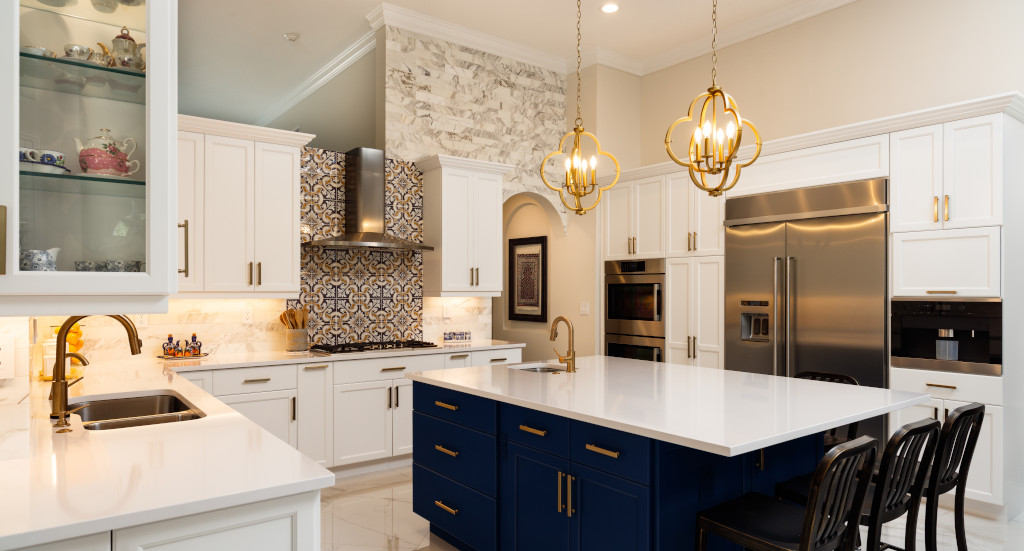 Kitchens Over $150,000
Kitchens Over $150,000
Studio Stratton
This traditional kitchen was newly built to accommodate the needs of a young growing family. The large windows created some challenges with regard to upper cabinets. The designer chose to solve this issue with a unique glass-fronted built-in cabinet in a different gray color with Cremone bolts to highlight the homeowner’s collection of decorative plates and serving pieces.
- National/Regional Award: Studio Stratton, San Diego, CA
- Regional Award: MA Peterson Designbuild, Edina, MN
- Regional Award: Platt Builders, Groton, MA
- Regional Award: dB Atlanta, Alpharetta, GA
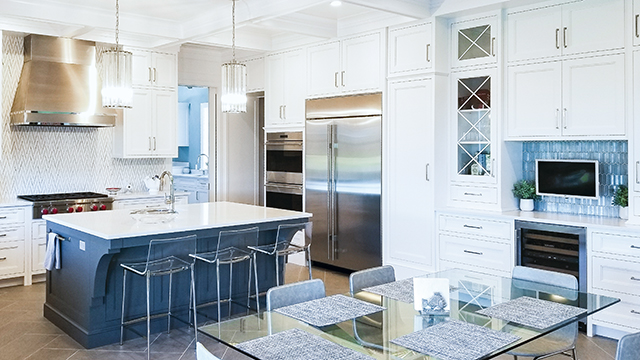 Kitchens $75,000-$150,000
Kitchens $75,000-$150,000
Daniel Contelmo Architects
To update the dated aesthetic of the original kitchen, coffered ceilings were added to help scale down the existing tall ceilings, and the color palette was lightened to keep the kitchen bright. The upper cabinets were made larger and the detailing of the moldings was simplified to provide a cleaner look. The chevron pattern of the tiling is simple but adds texture and definition to the space.
- National/Regional Award: Daniel Contelmo Architects, Poughkeepsie, NY with Tiffany Eastman Interiors, LLC, Fairfield, CT
- Regional Award: TreHus
Architects, Golden Valley, MN - Regional Award: S&W Kitchens, Longwood, FL
- Regional Award: Slater Interiors, Bothell, WA
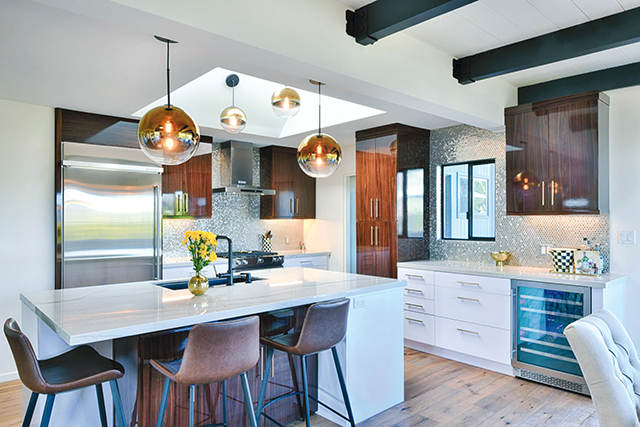 Kitchens Under $75,000
Kitchens Under $75,000
Studio Stratton
The homeowners of this contemporary kitchen wanted a high-end appearance on a tight budget, so the designer created a luxurious look using a two-tone cabinetry selection. The kitchen was also opened up to adjoining spaces for a more modern and sophisticated approach. Numerous elements were used throughout the kitchen to create a sleek, contemporary feel.
- National/Regional Award: Studio Stratton, San Diego, CA
- Regional Award: Knutson Residential Design, St. Paul, MN
- Regional Award: RS Mannino Architects + Builders, Rutherford, NJ
- Regional Award: Carriage House Custom Homes & Interiors, Franklin, TN
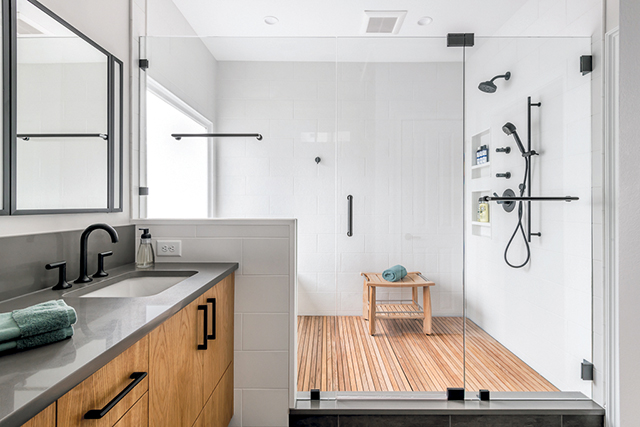 Baths Over $75,000
Baths Over $75,000
Innovative Construction
Functionally, the homeowners wanted a lot of storage. The project included recessed medicine cabinets and scads of cabinetry on the his-and-hers vanity. A countertop cabinet was also included in the space. Drawers were created beneath the cabinets and some of the cabinets contained specialty pull-outs, including one for trash and one for the scale.
- National/Regional Award: Innovative Construction, Peachtree Corners, GA
- Regional Award: Marvista Design + Build, Pittsburgh, PA
- Regional Award: Marrokal Design & Remodeling, San Diego, CA
 Baths $50,000-$75,000
Baths $50,000-$75,000
S&W Kitchens
In the original bathroom, the client wanted a larger shower area, removal of the tub and more storage space. A rich wood vanity provides plenty of storage via doors and drawers, along with a tall linen cabinet. A white countertop with classic pale gray veining provides a dramatic contrast with the cabinets and an elegant look. The large shower features classic neutral tones against a dramatic tile floor and dark-toned fittings and hardware throughout.
- National/Regional Award: S&W Kitchens, Longwood, FL
- Regional Award: Advance Design Studio, Gilberts, IL
- Regional Award: Carnemark design+build, Bethesda, MD
- Regional Award: Studio Stratton, San Diego, CA
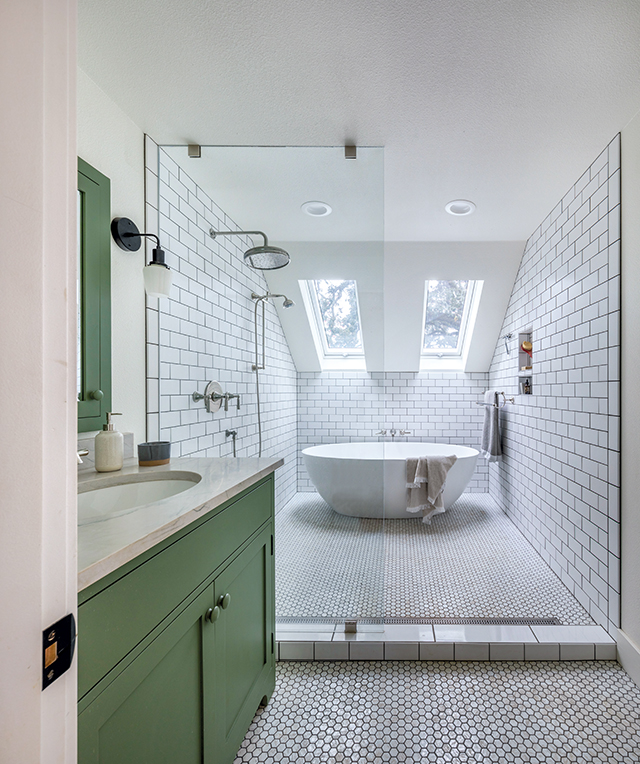 Baths Under $50,000
Baths Under $50,000
C&R Remodeling
This farmhouse was typical of a bygone era when the main floor bathroom served the entire house. To improve convenience and family harmony, a second-story bath was added that includes a single vanity in an olive green shade, along with an abundance of white subway tile given a fresh upgrade with gray grout. A wet room includes a rainshower, hand-held shower and soaking tub under skylights.
- National/Regional Award: C&R Remodeling, Salem, OR
- Regional Award: Jaque Bethke Design, Scottsdale, AZ
- Regional Award: OA Design Build, Minneapolis, MN
- Regional Award: Great Northern Builders, South Berwick, ME
- Regional Award: TEW Design Studio, Raleigh, NC
The post Shining Stars appeared first on Kitchen & Bath Design News.
Did you miss our previous article…
https://www.conduithardware.com/?p=302






